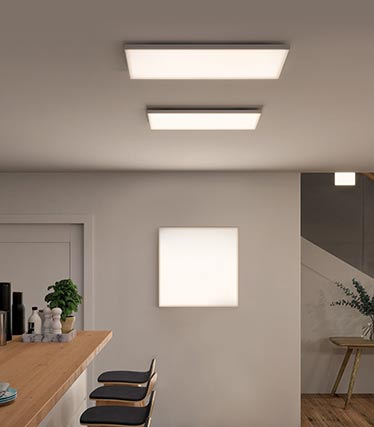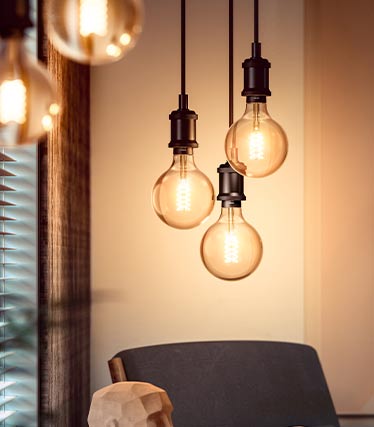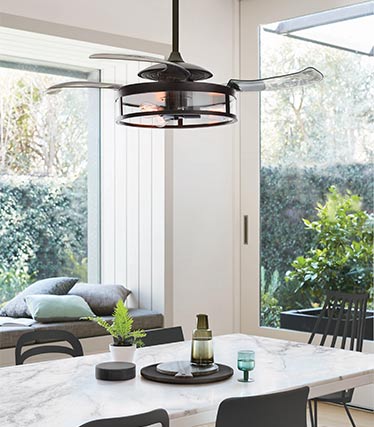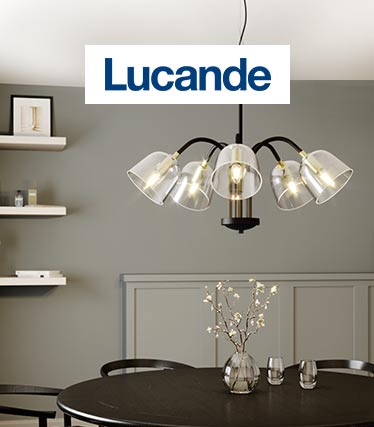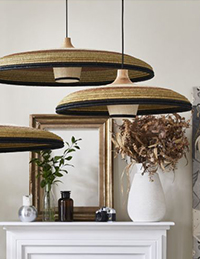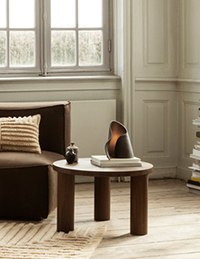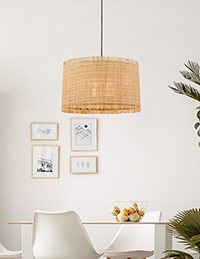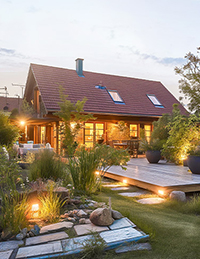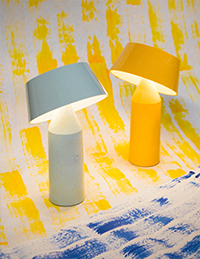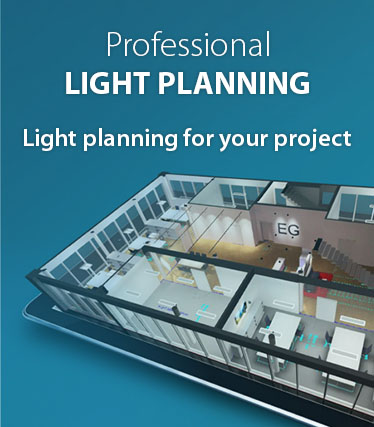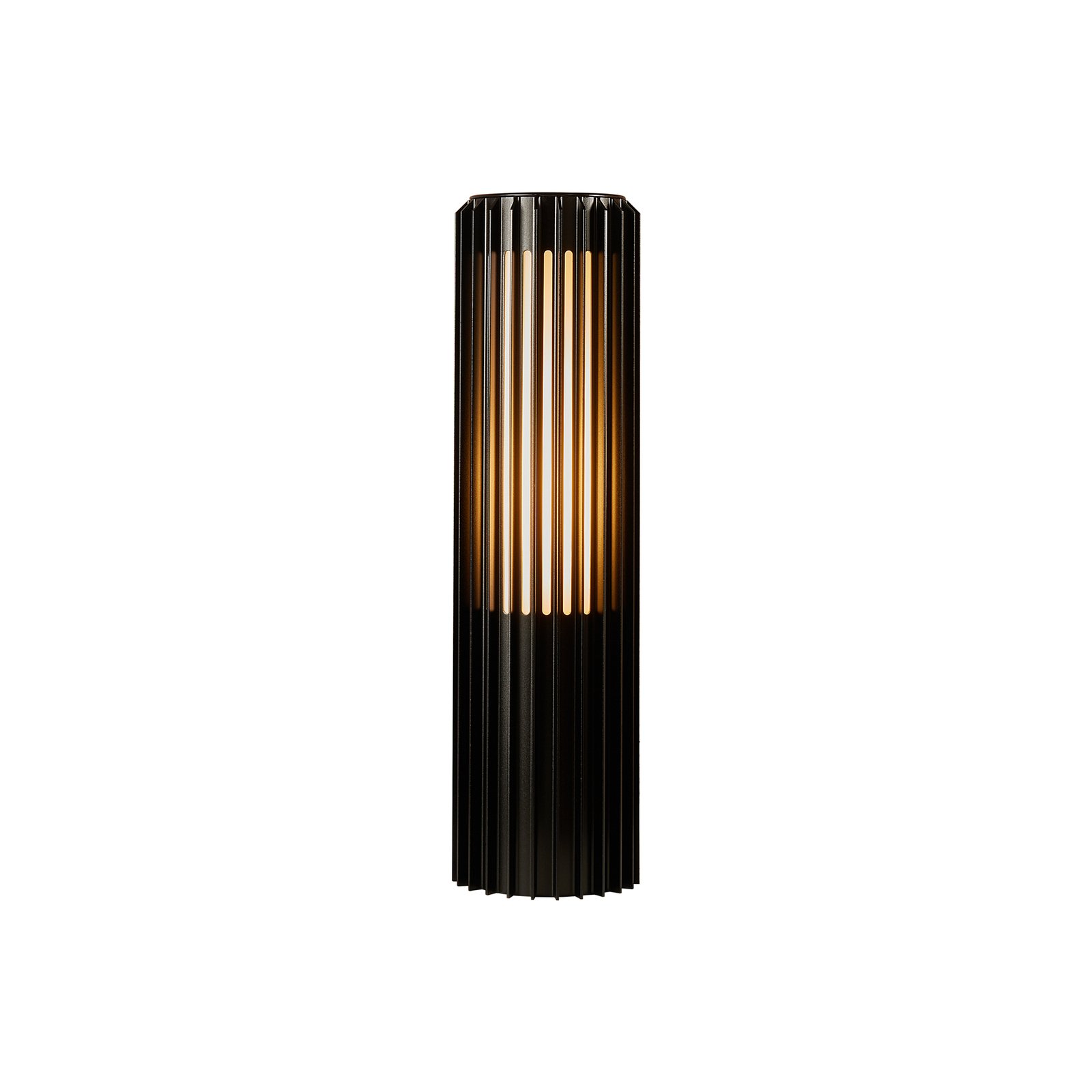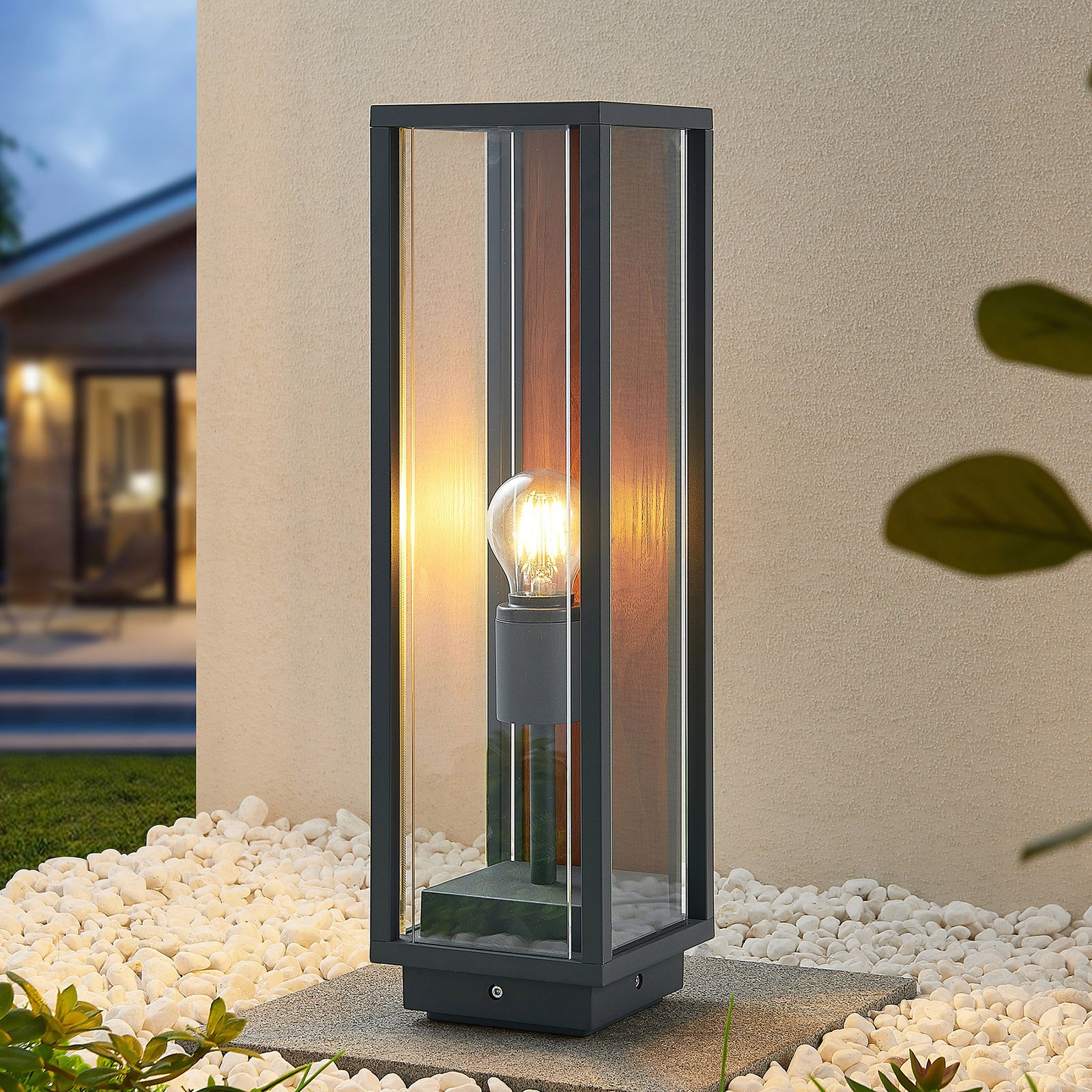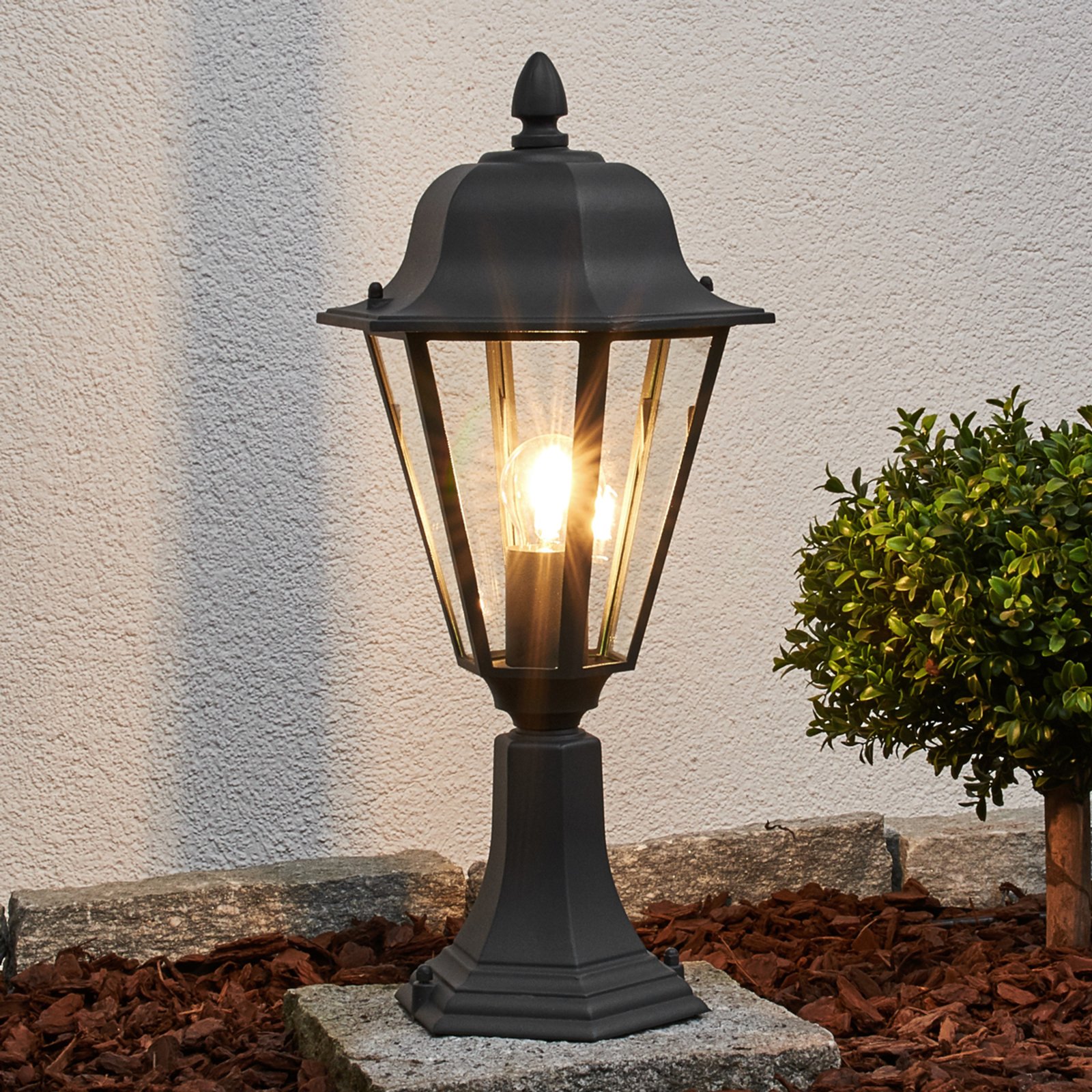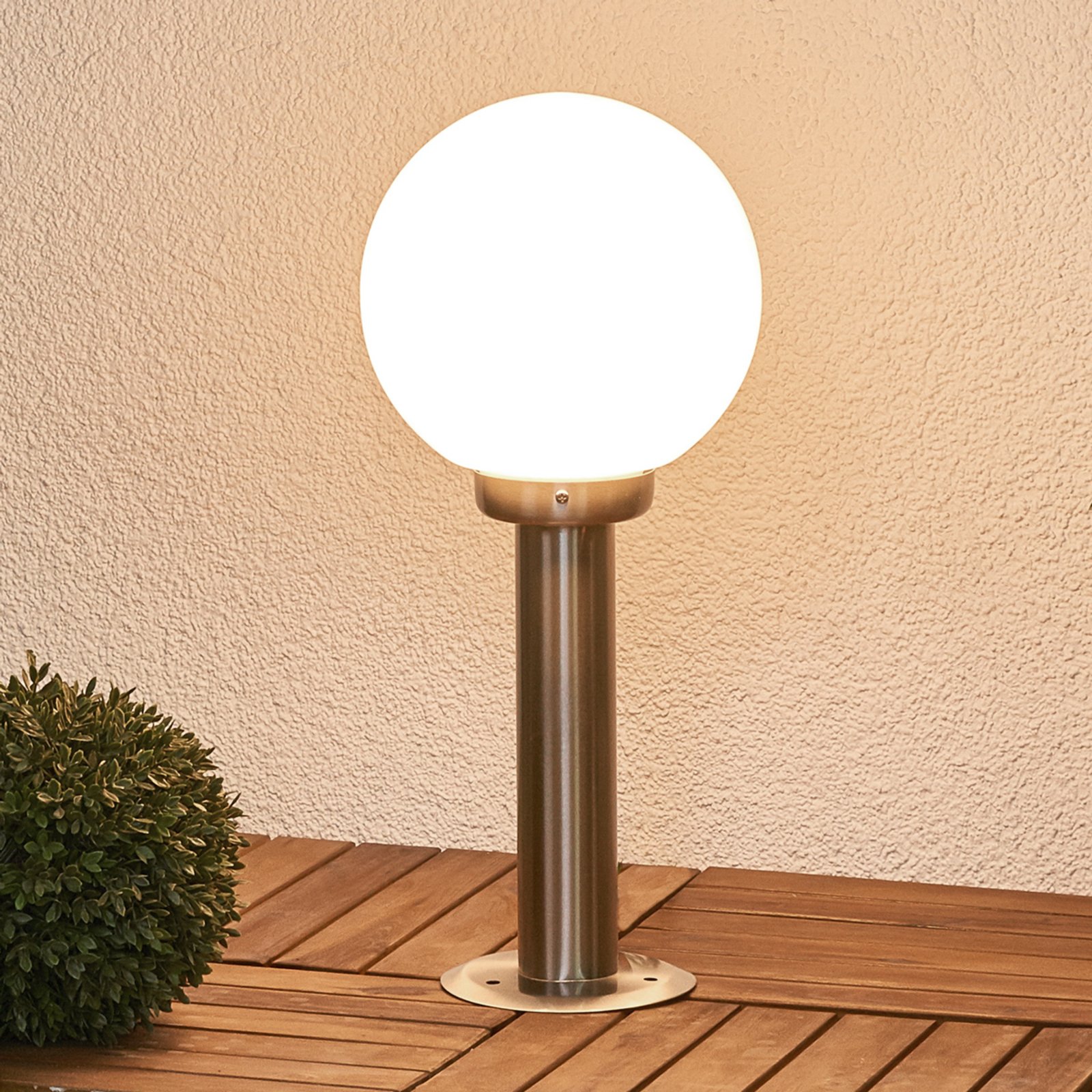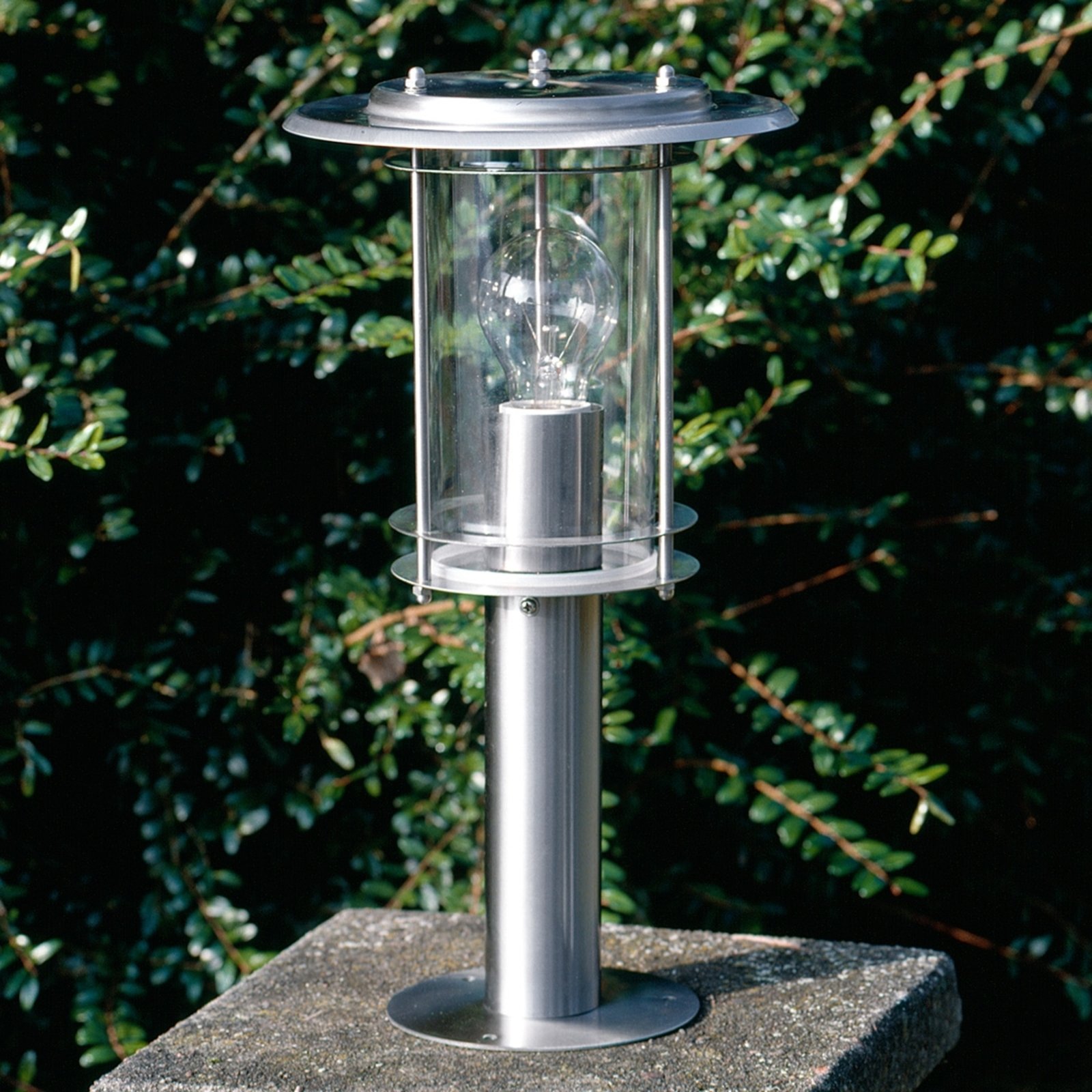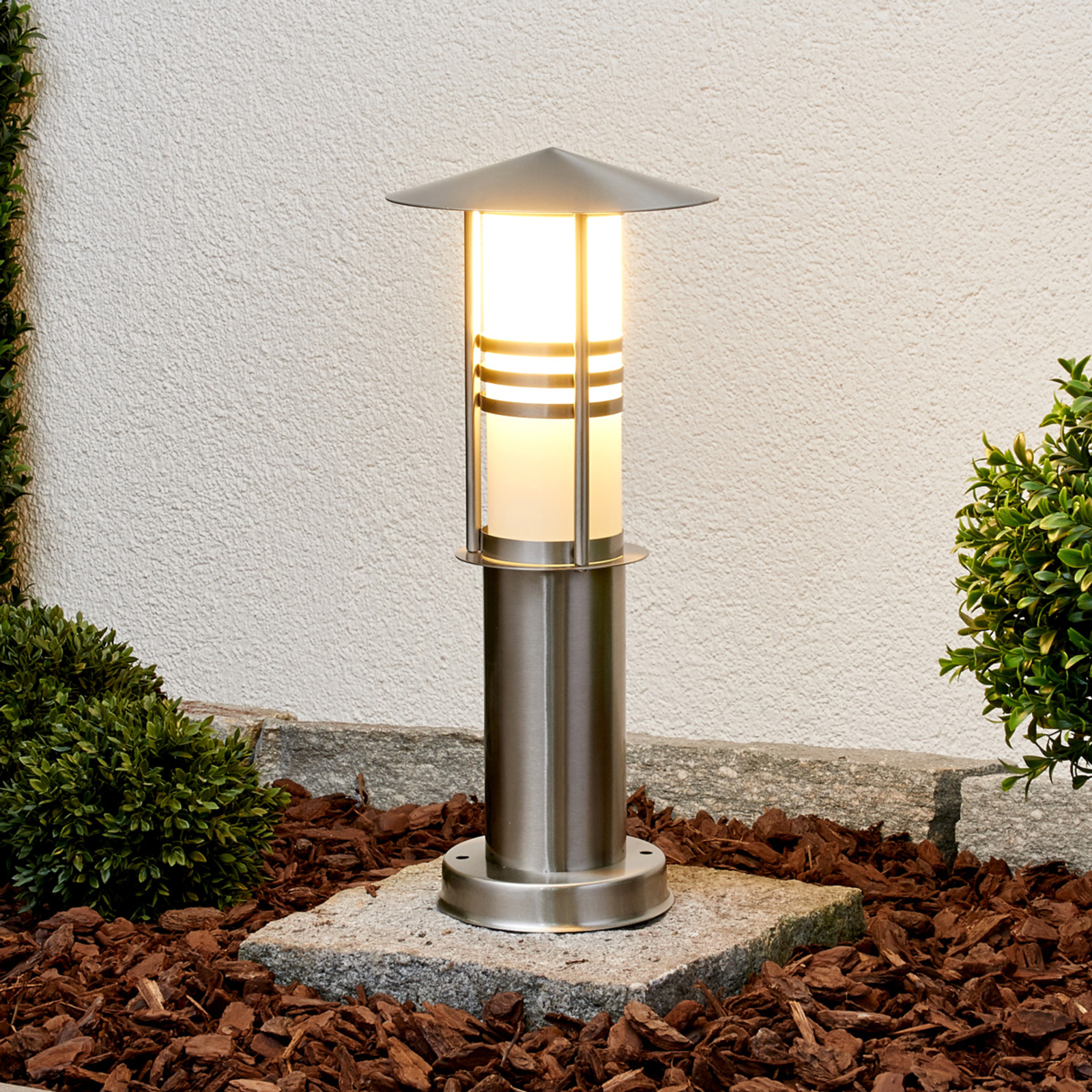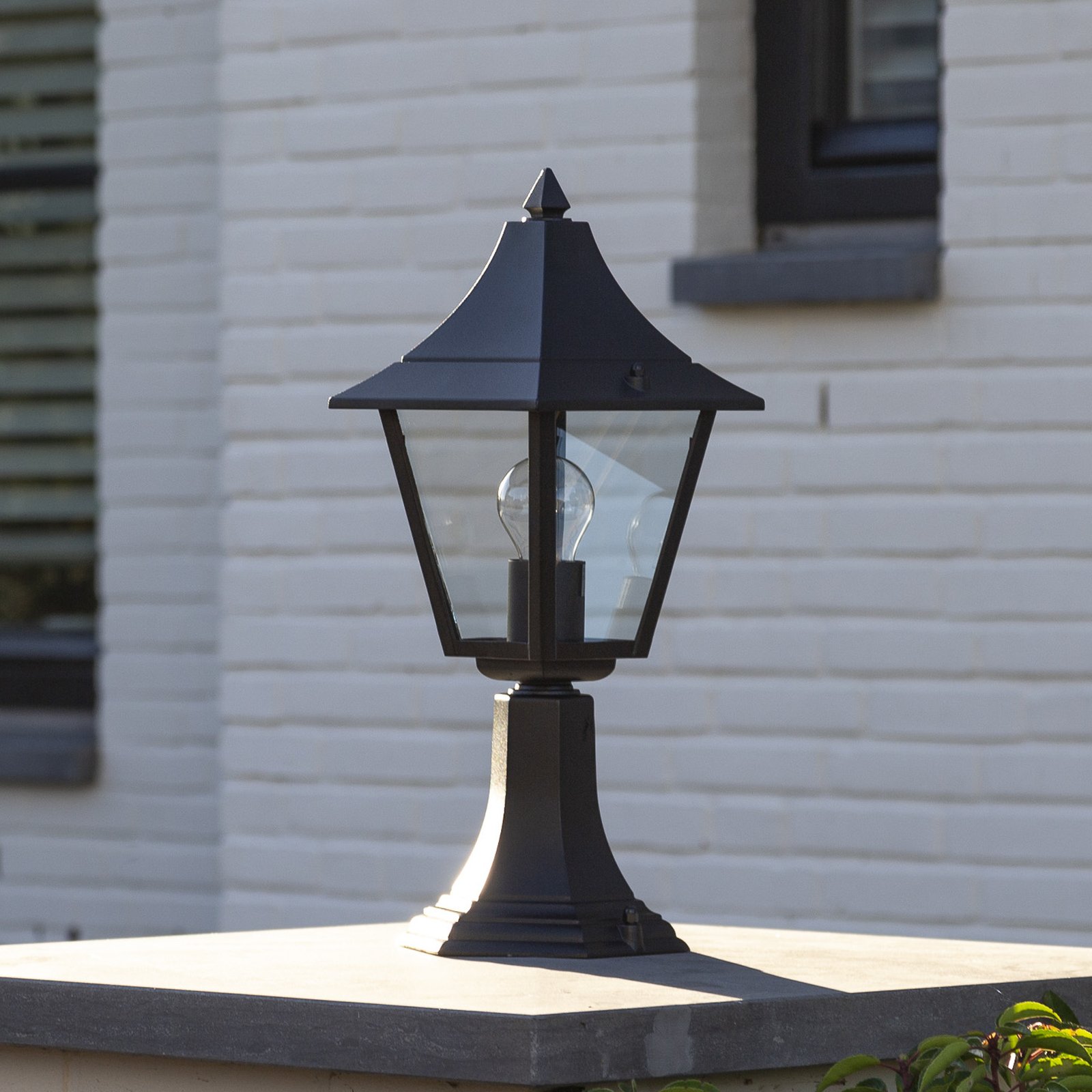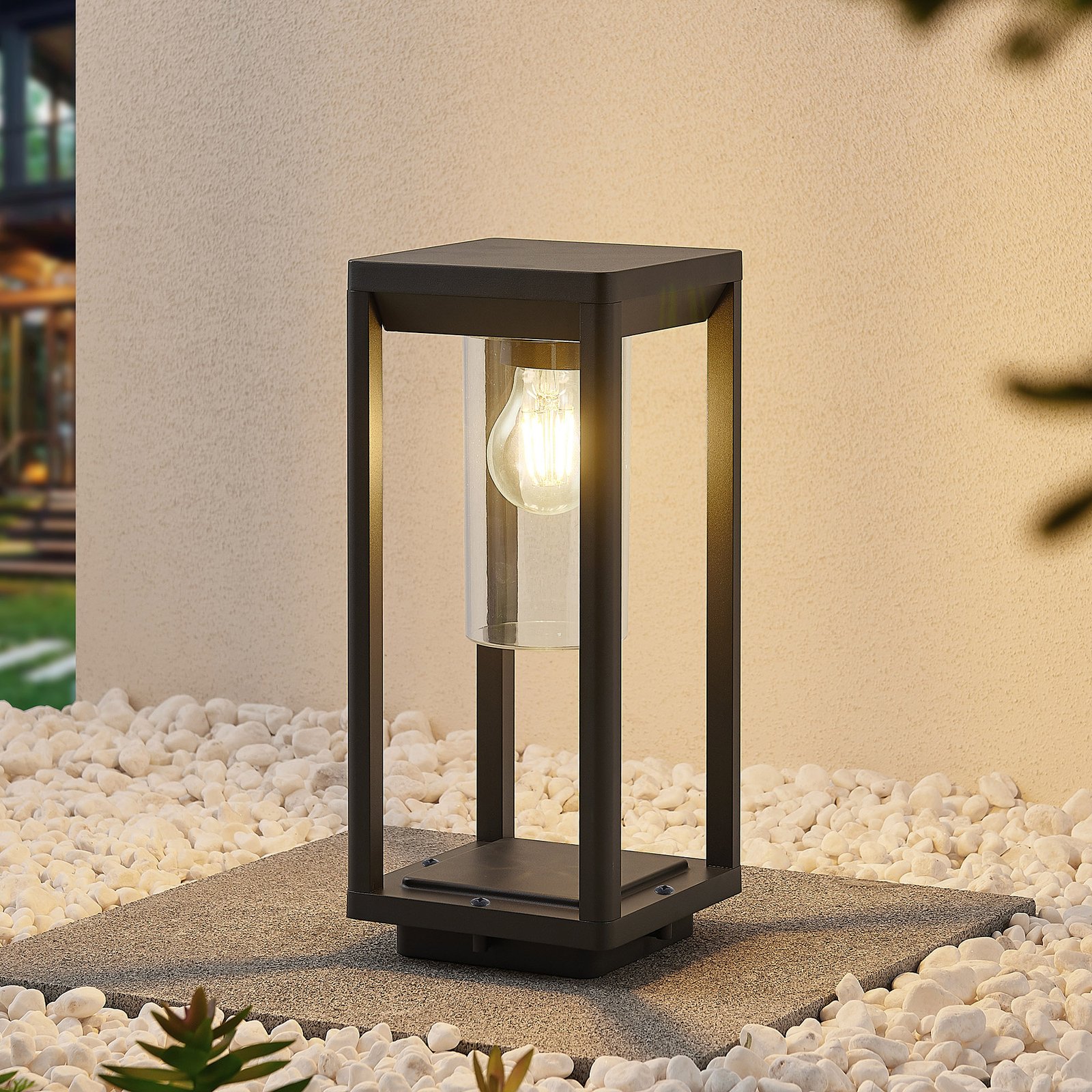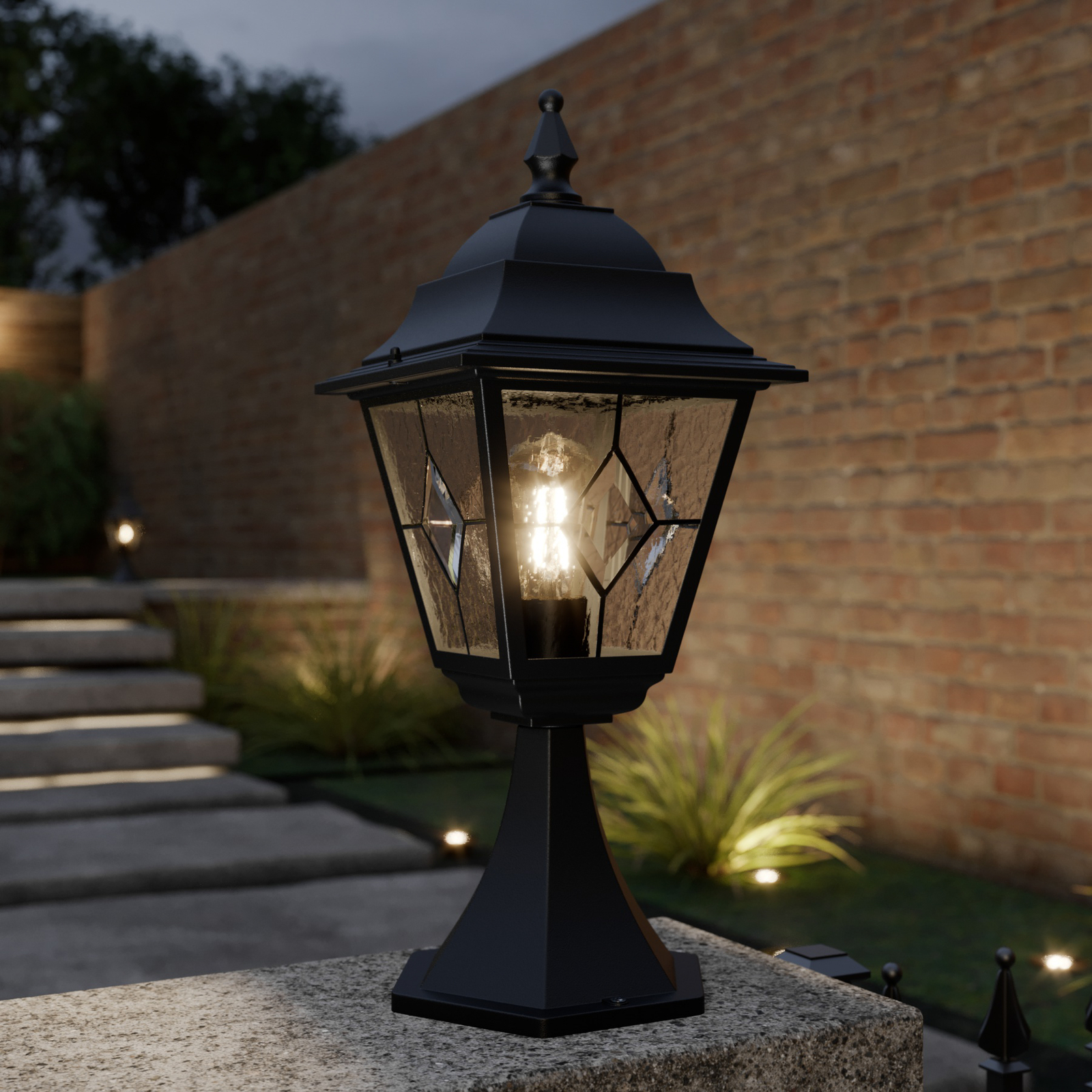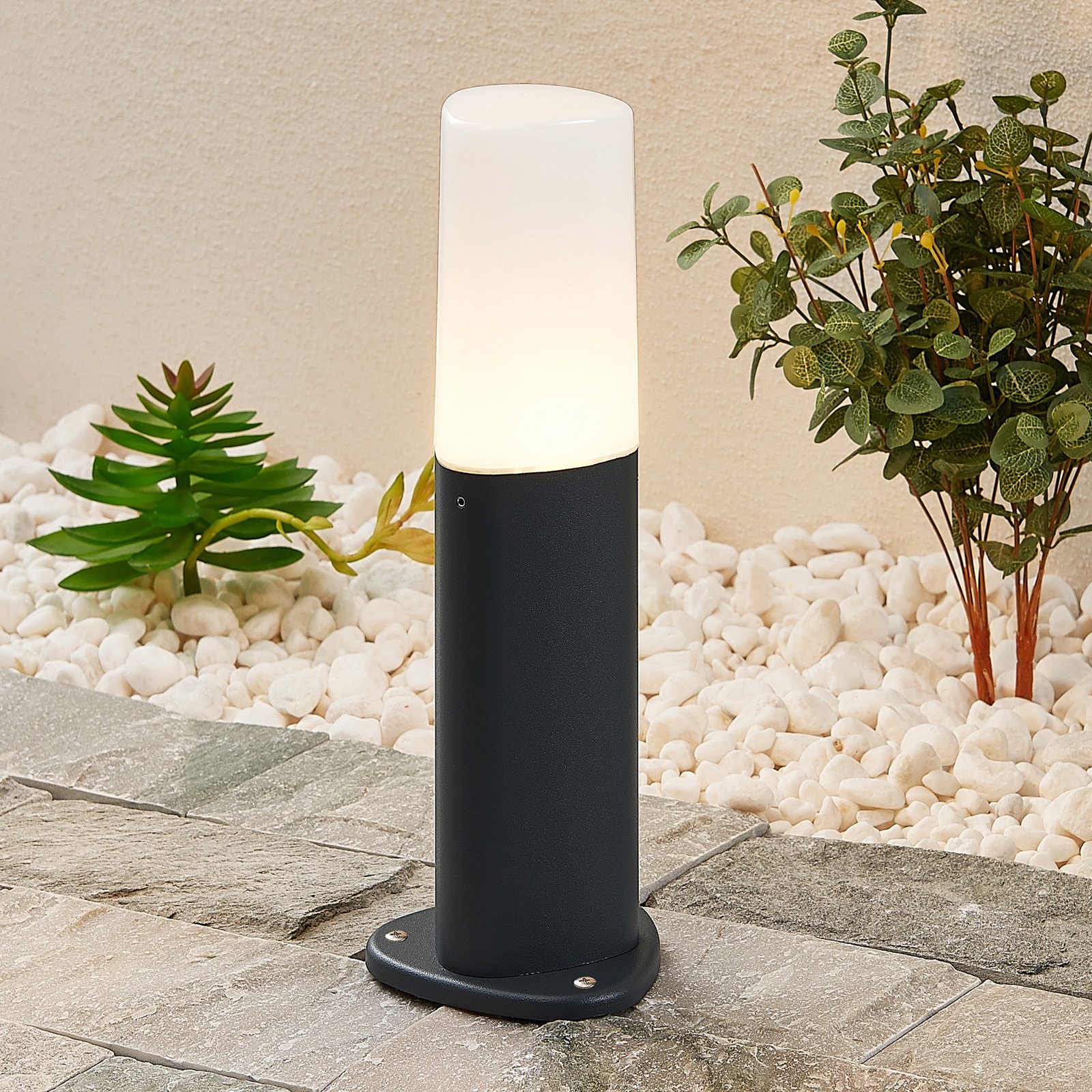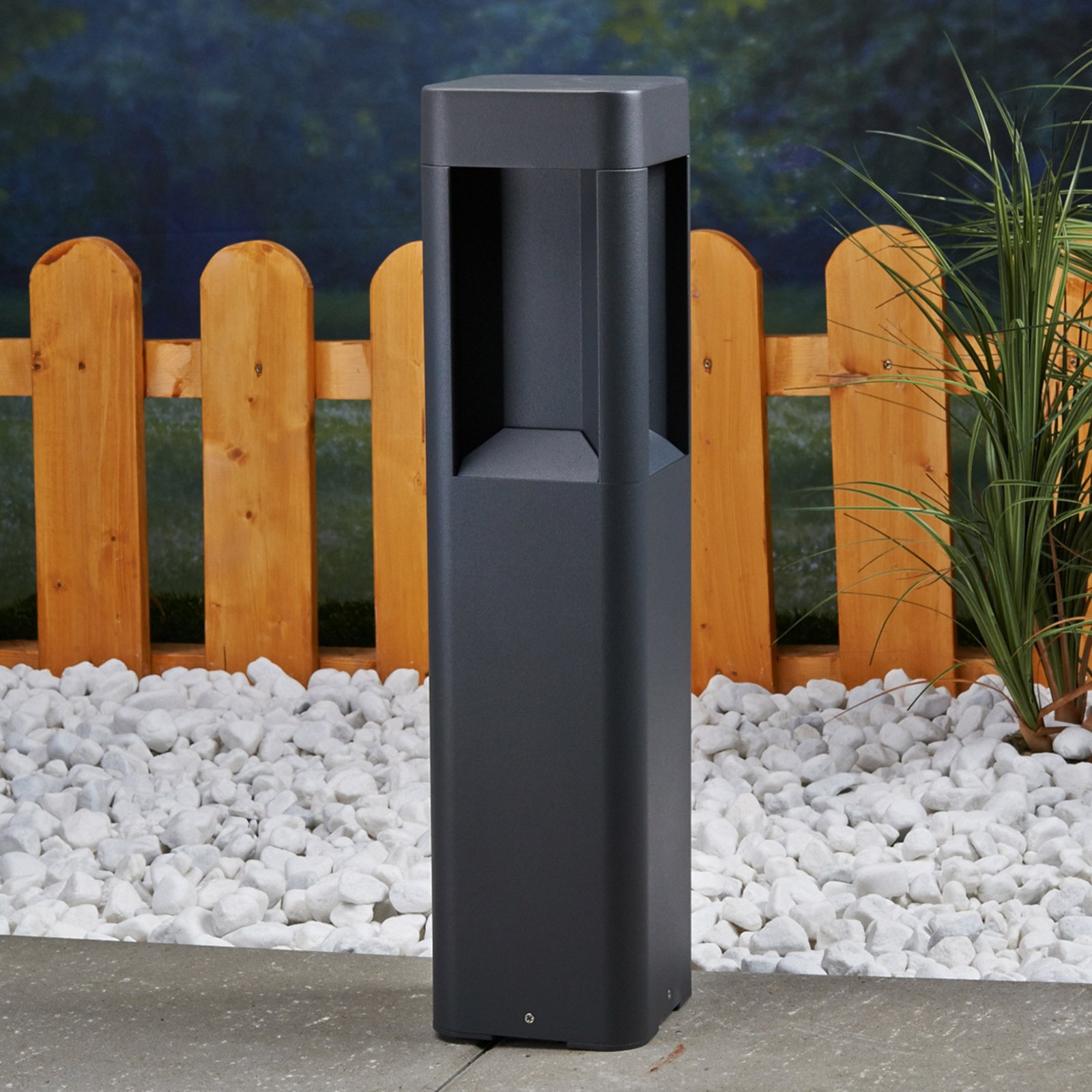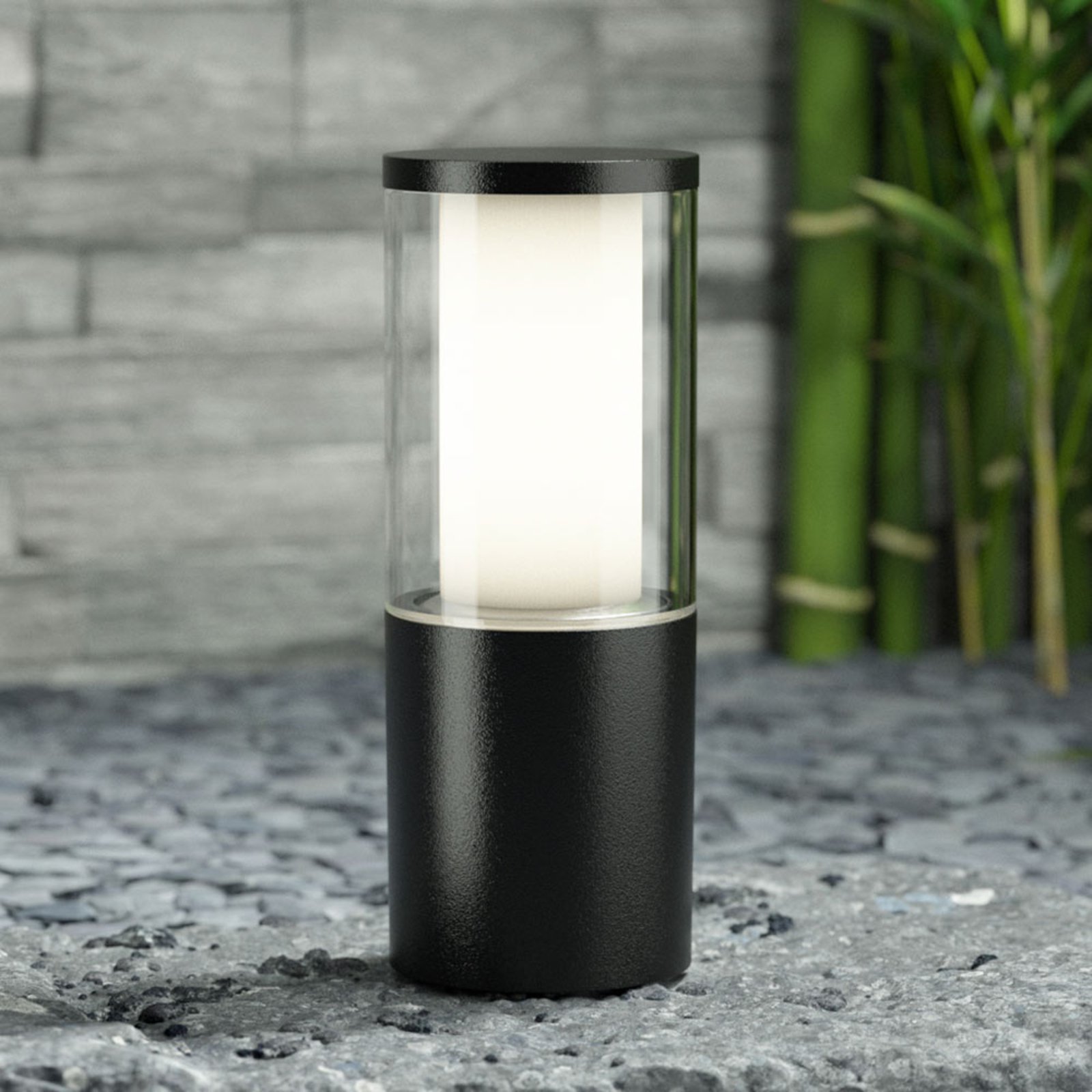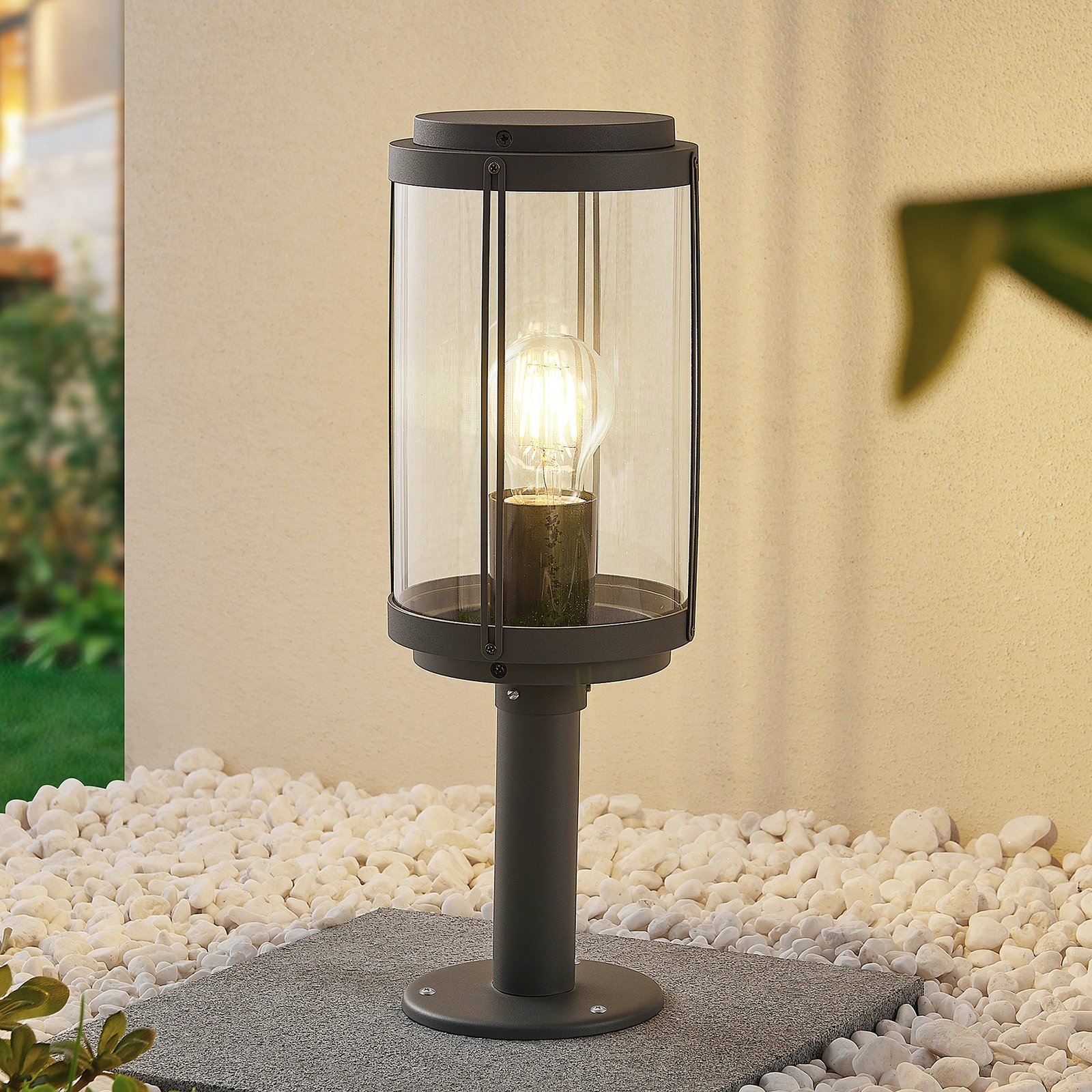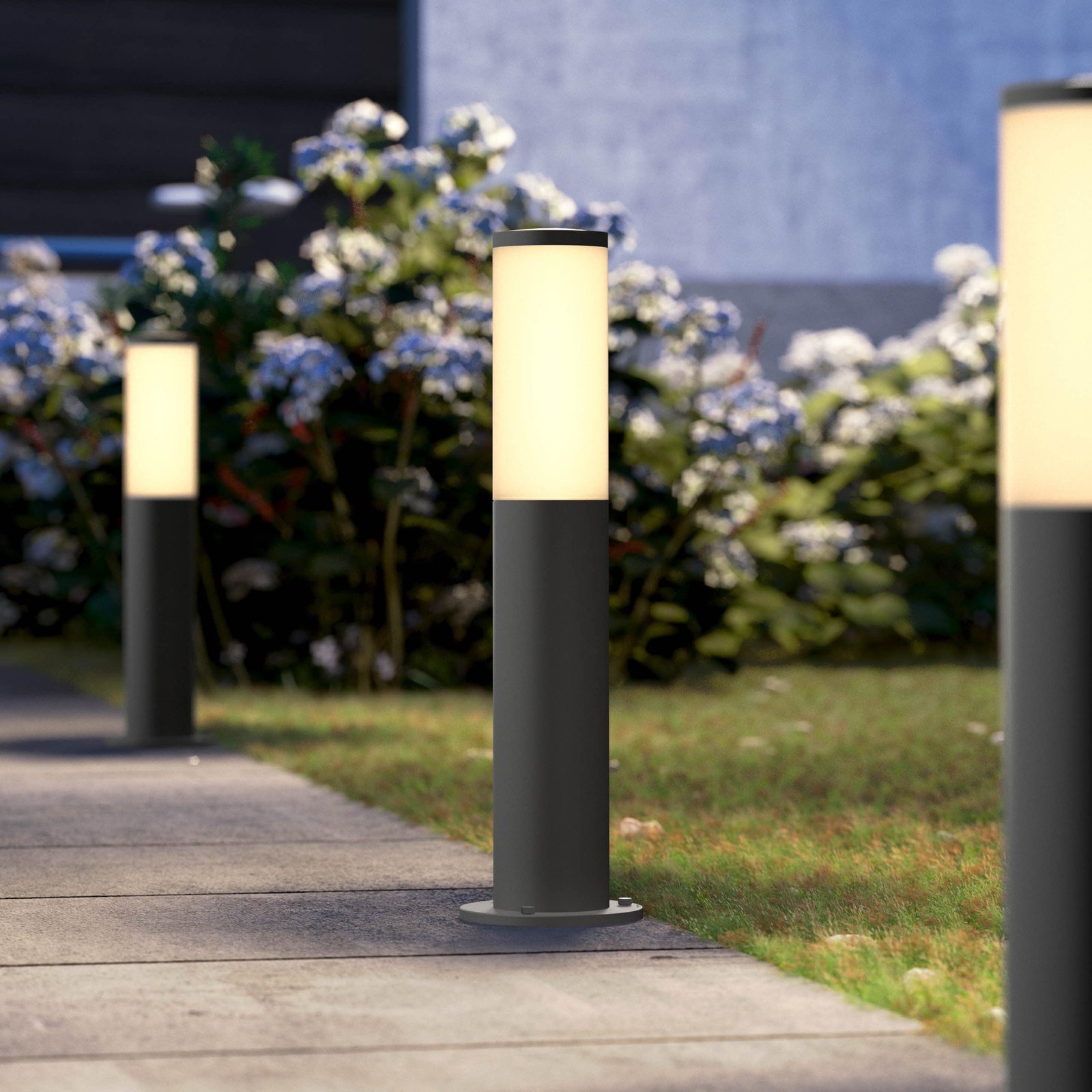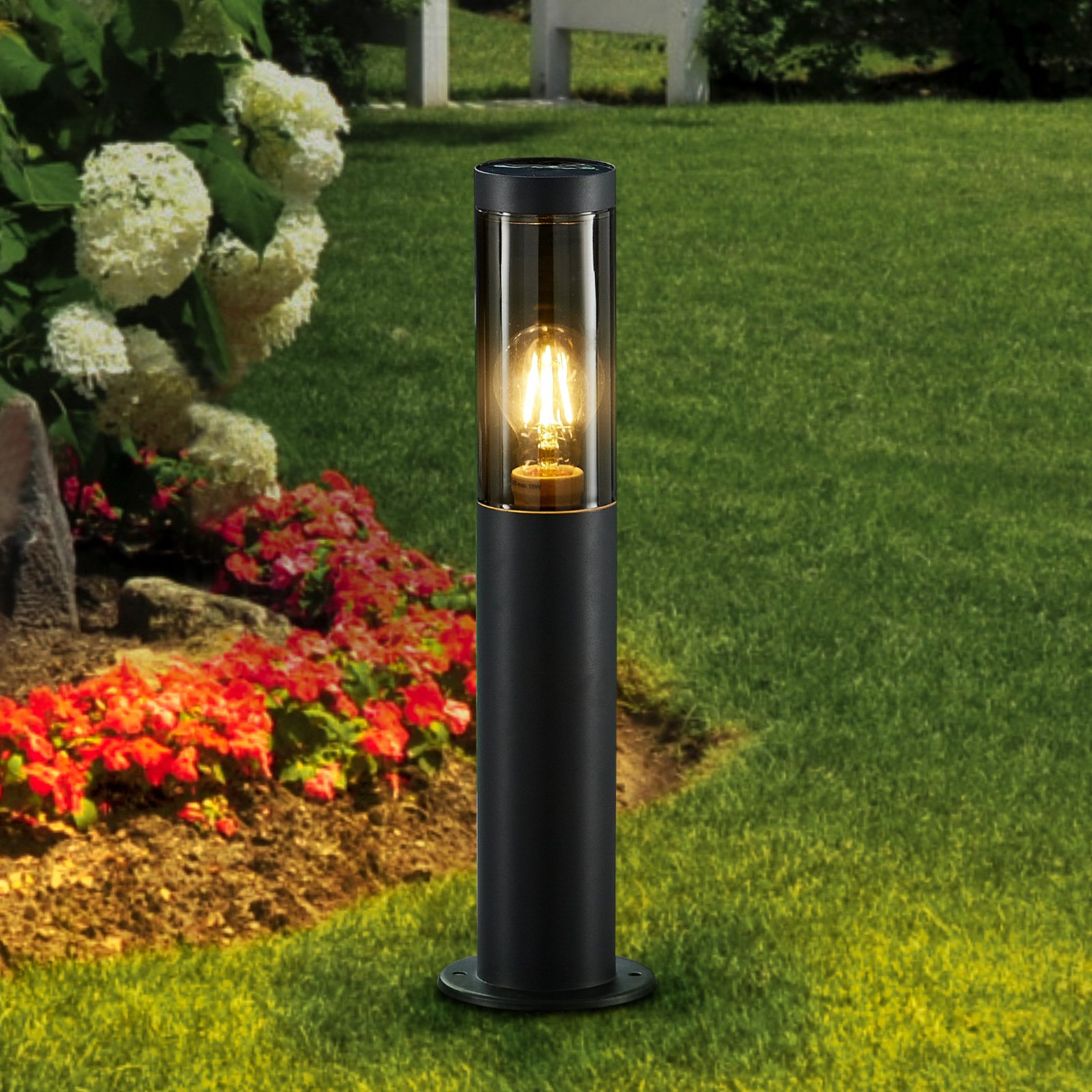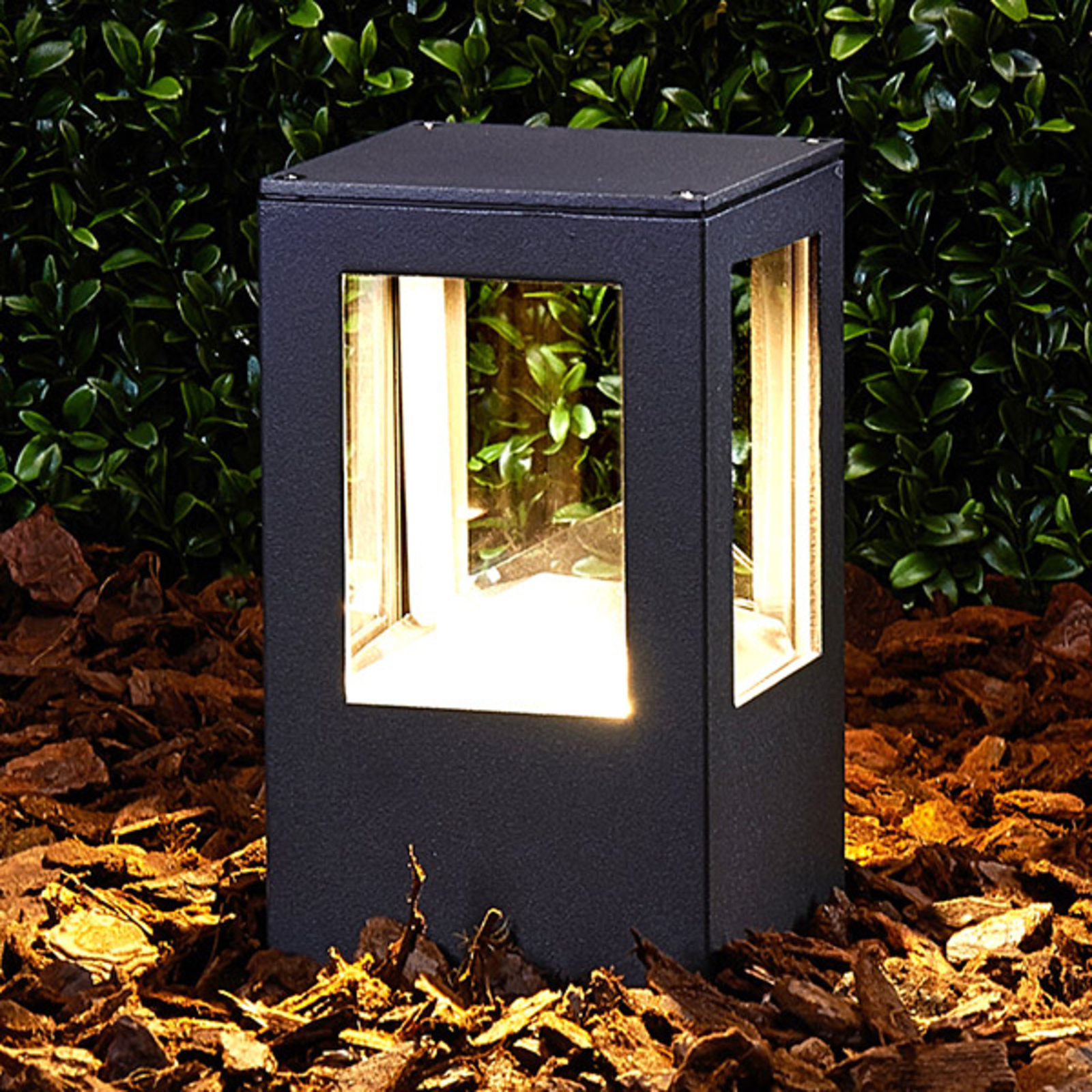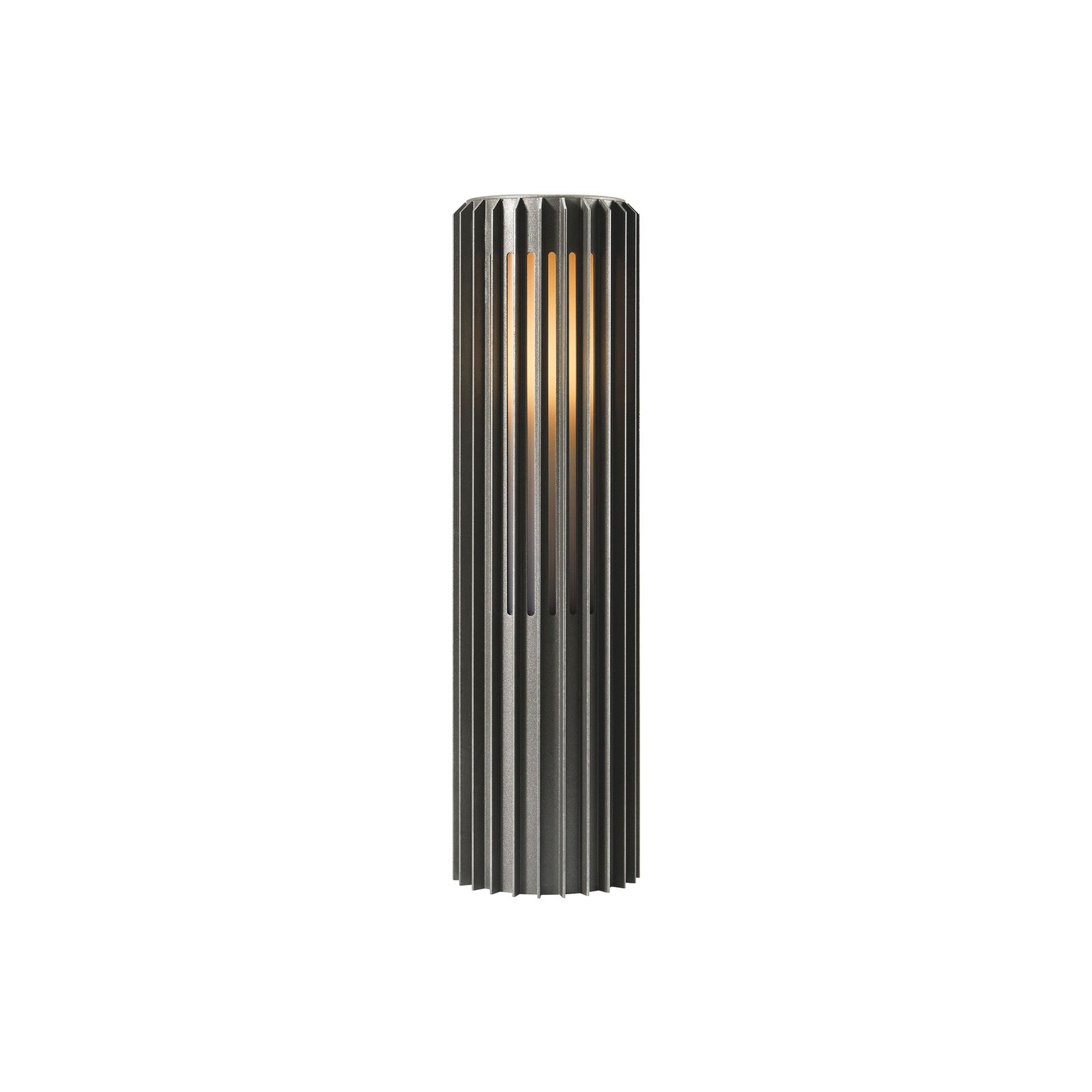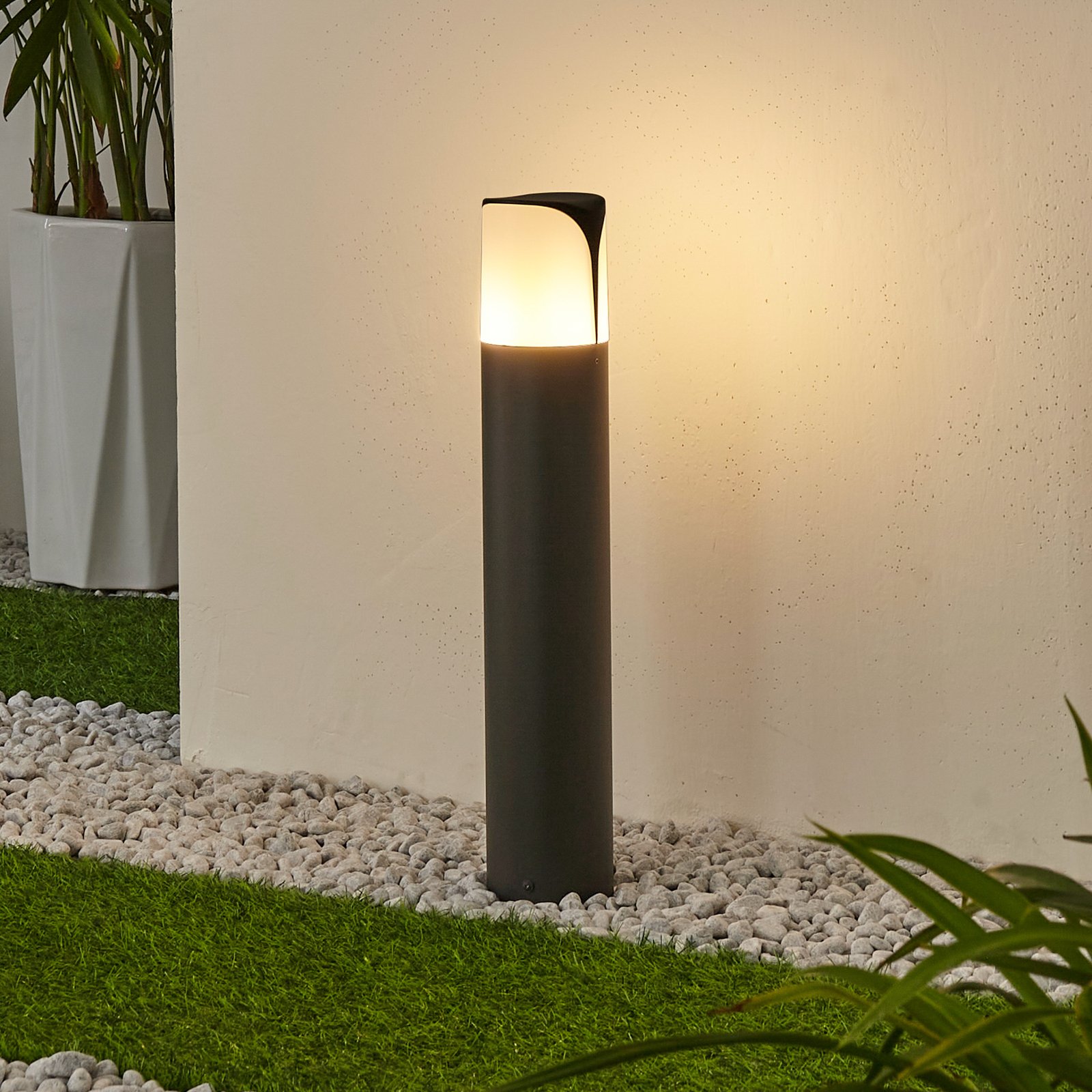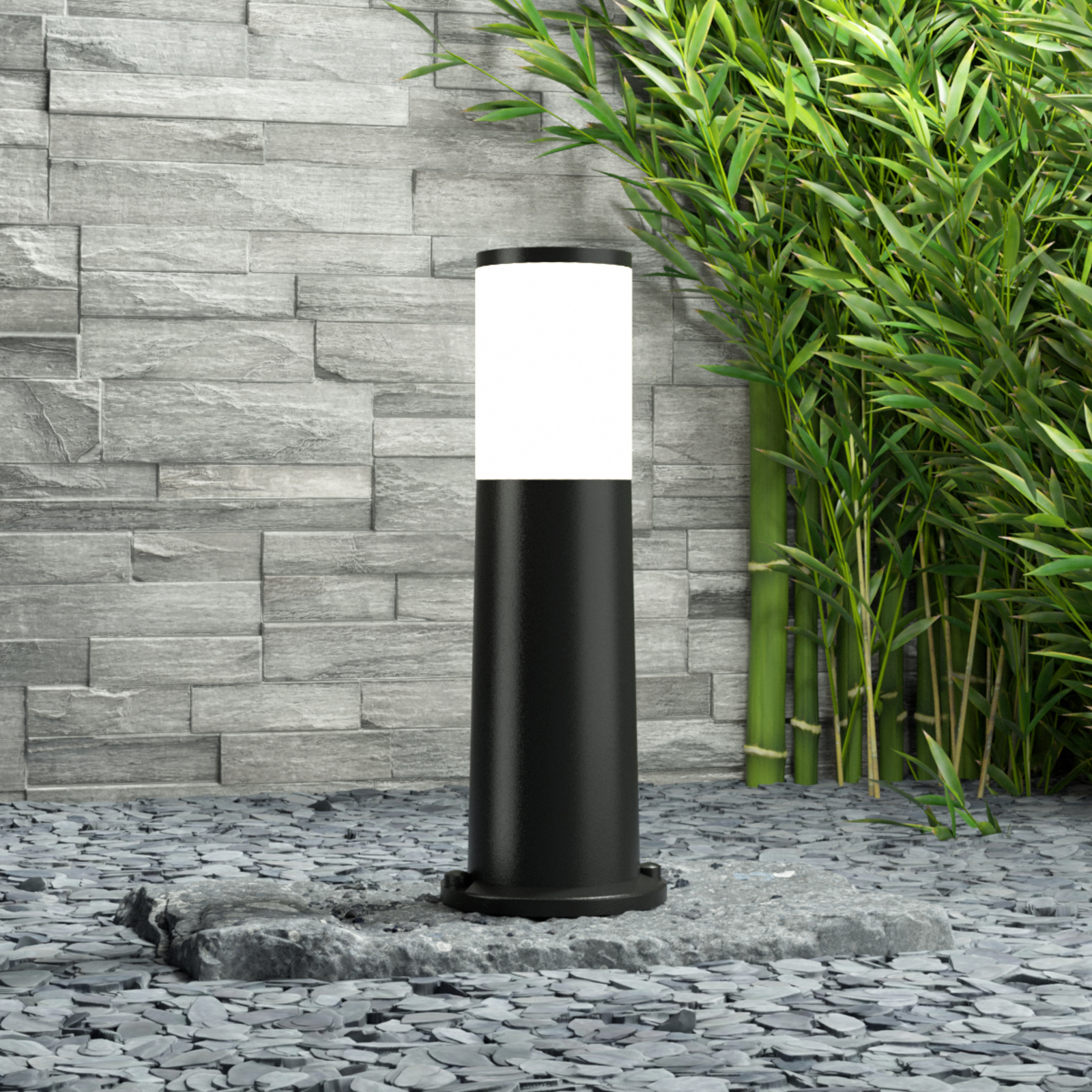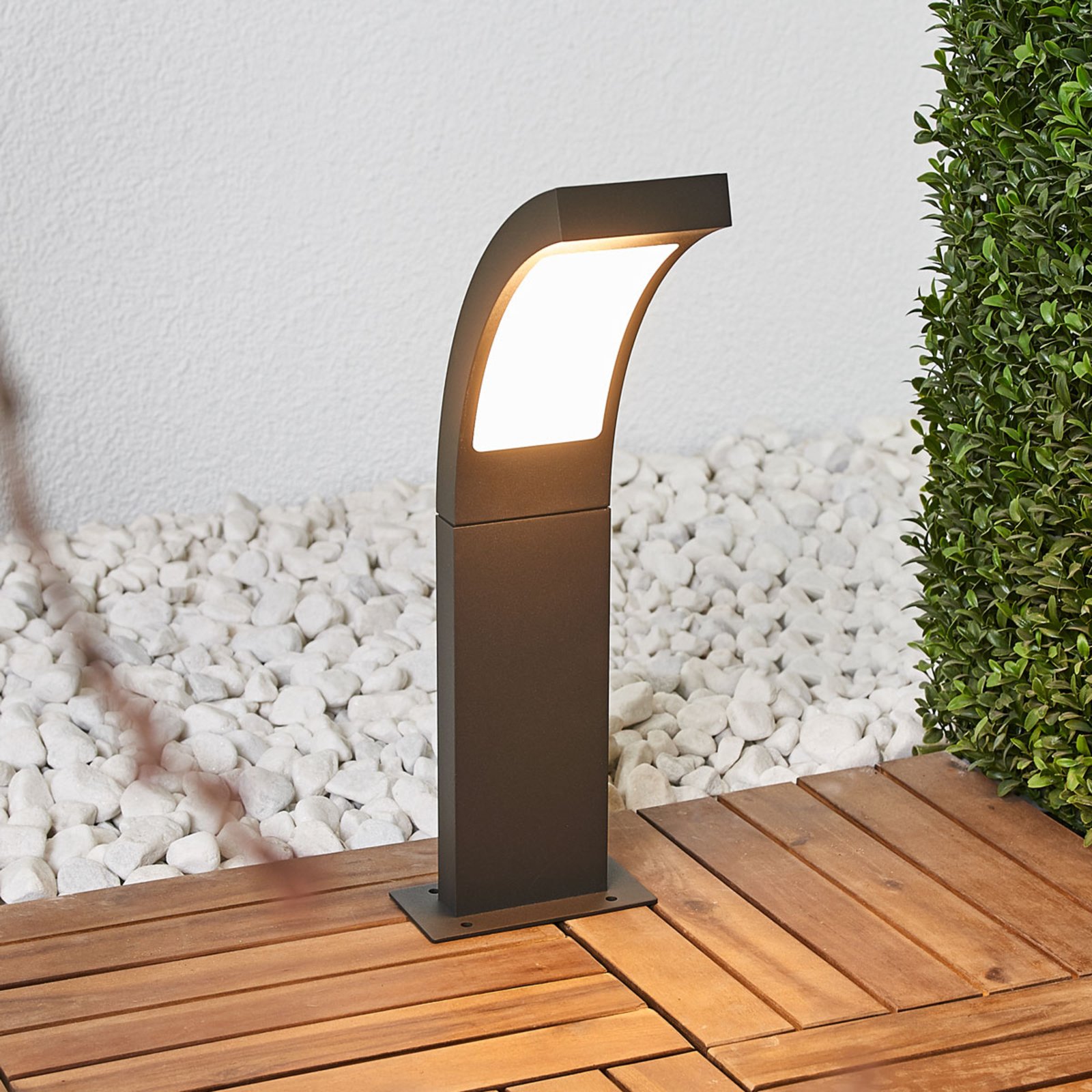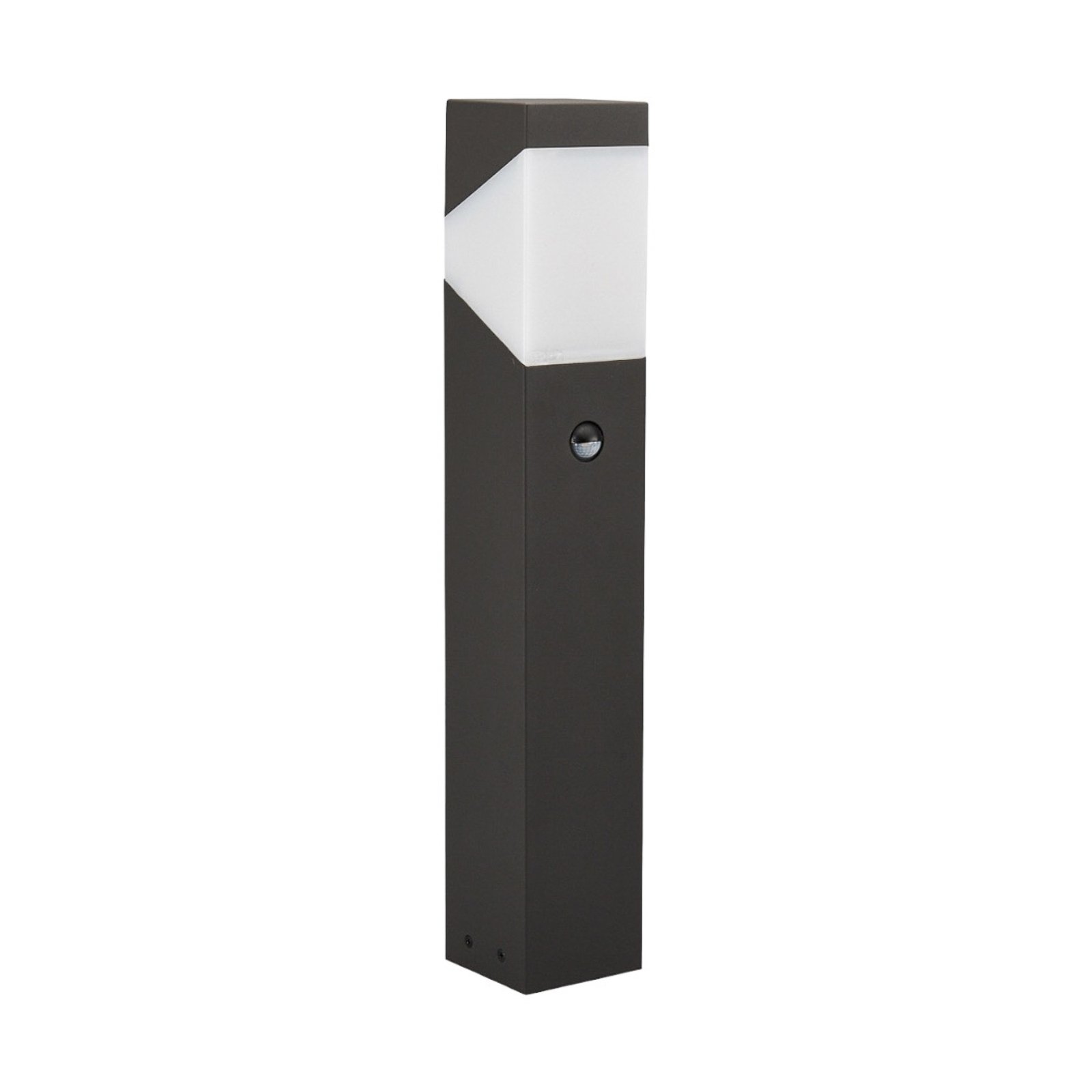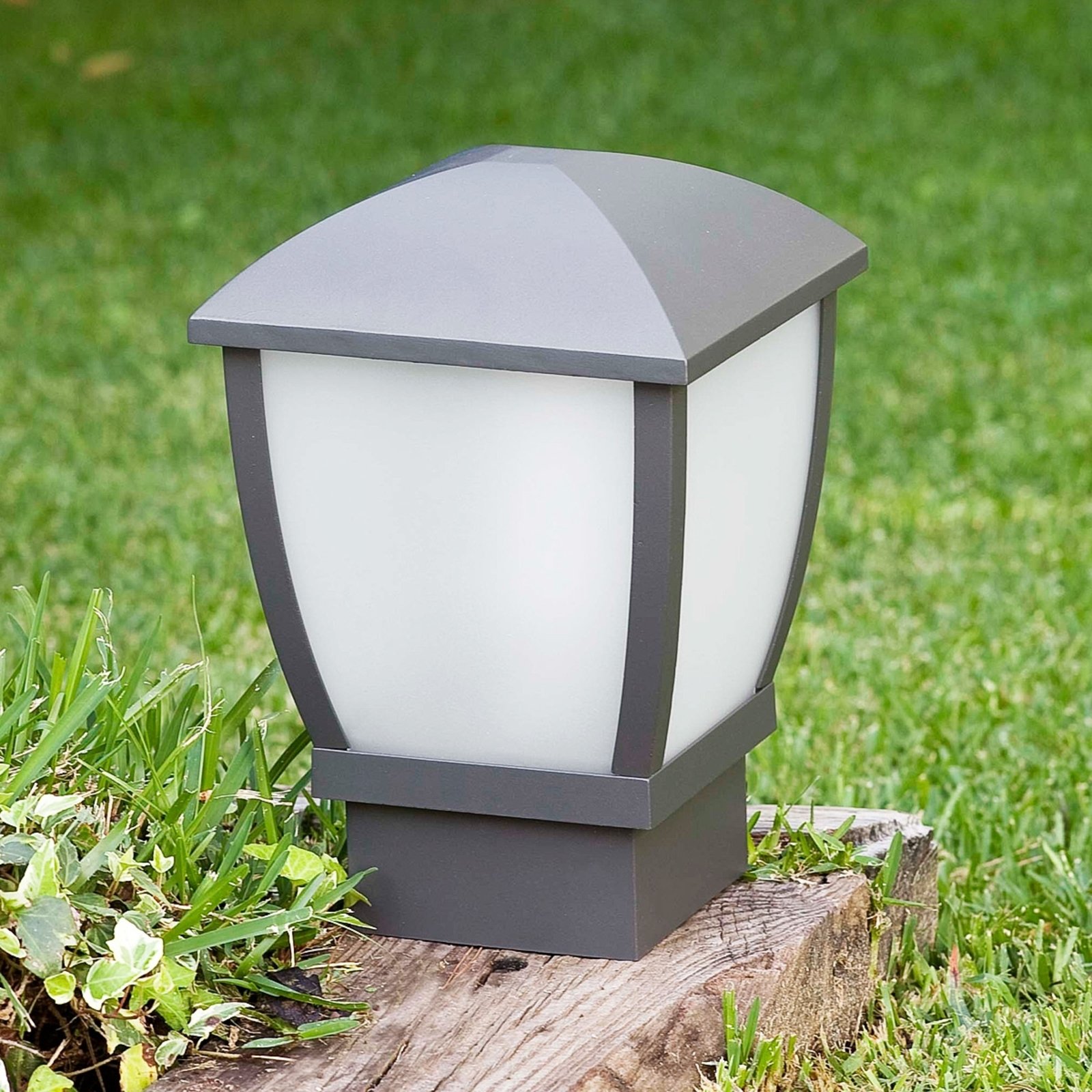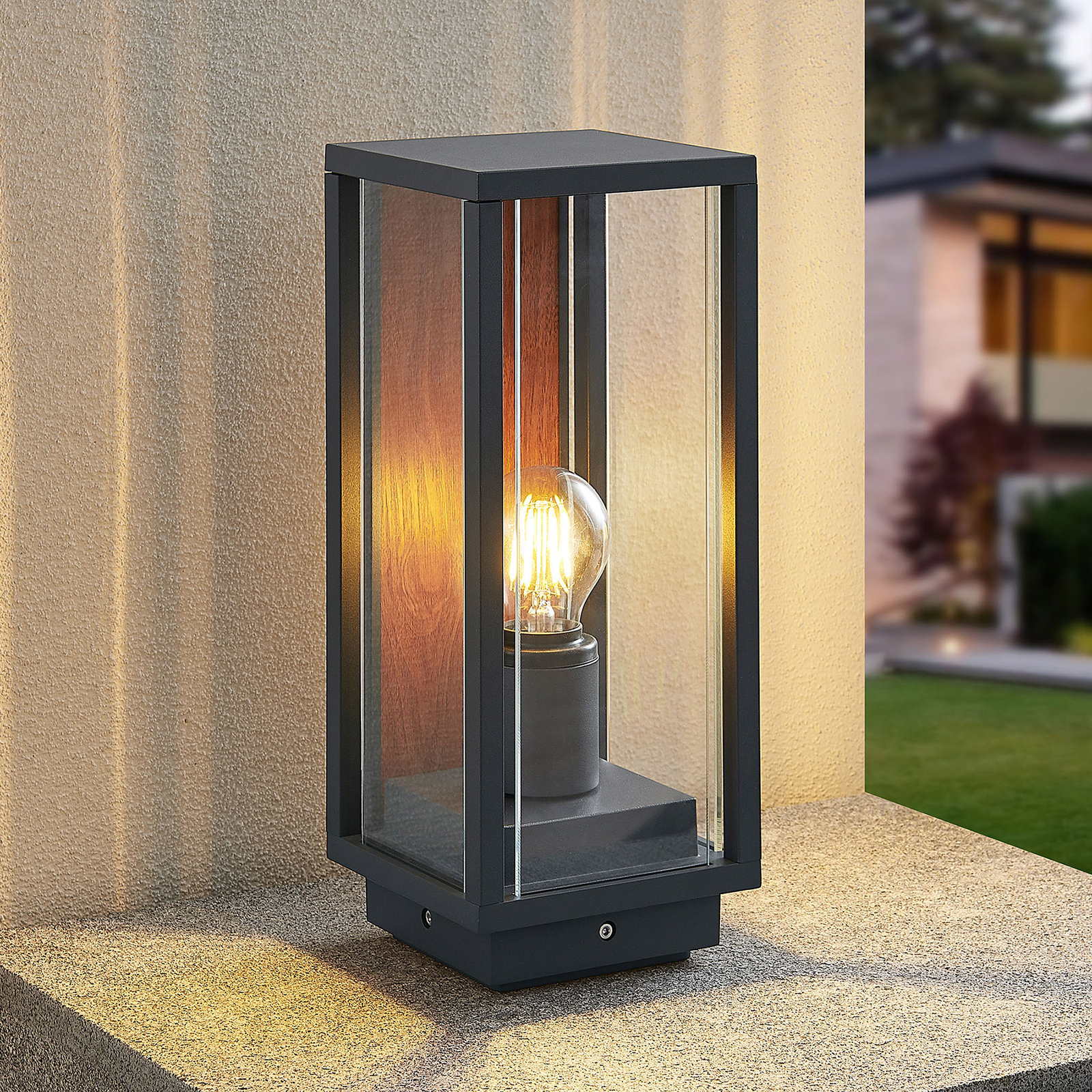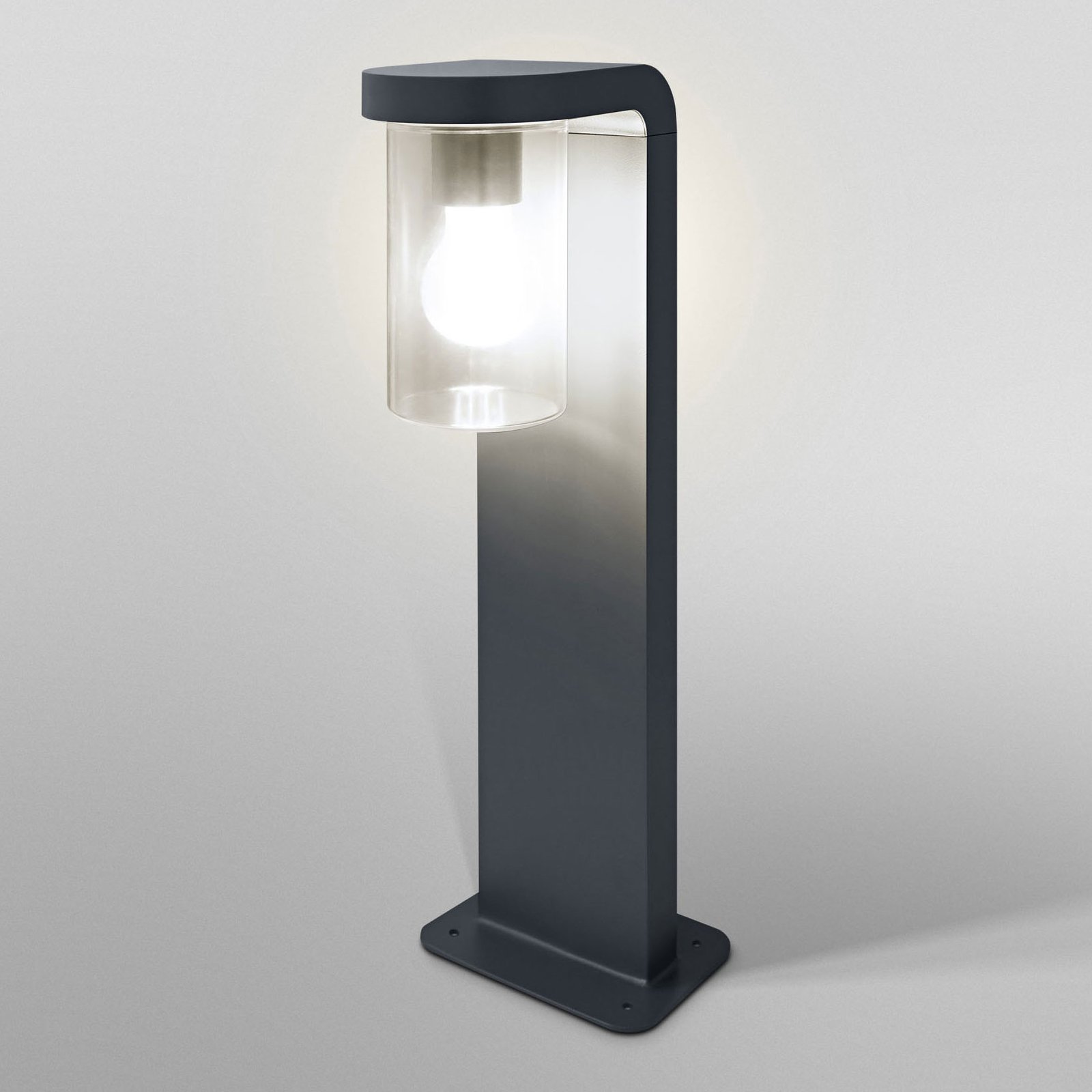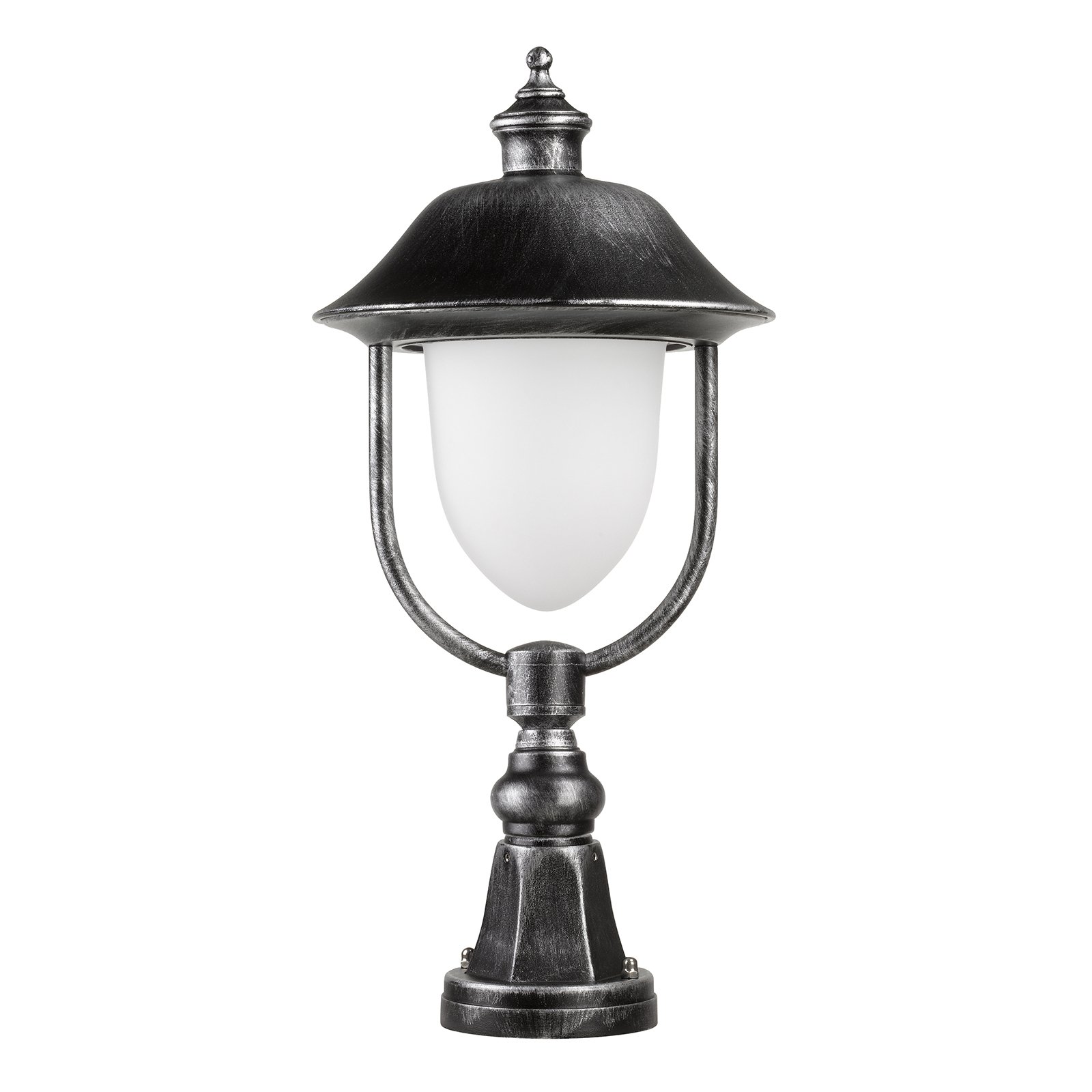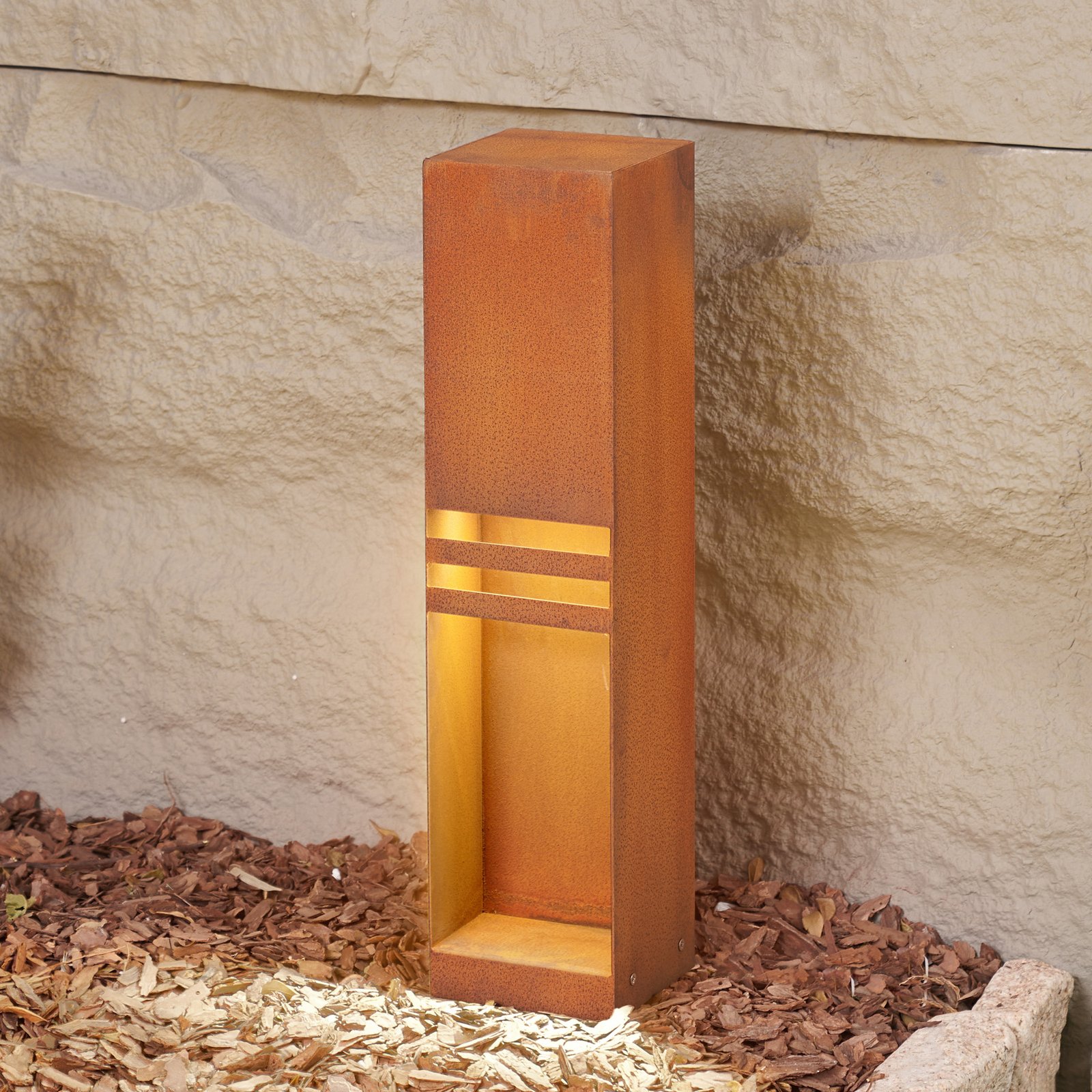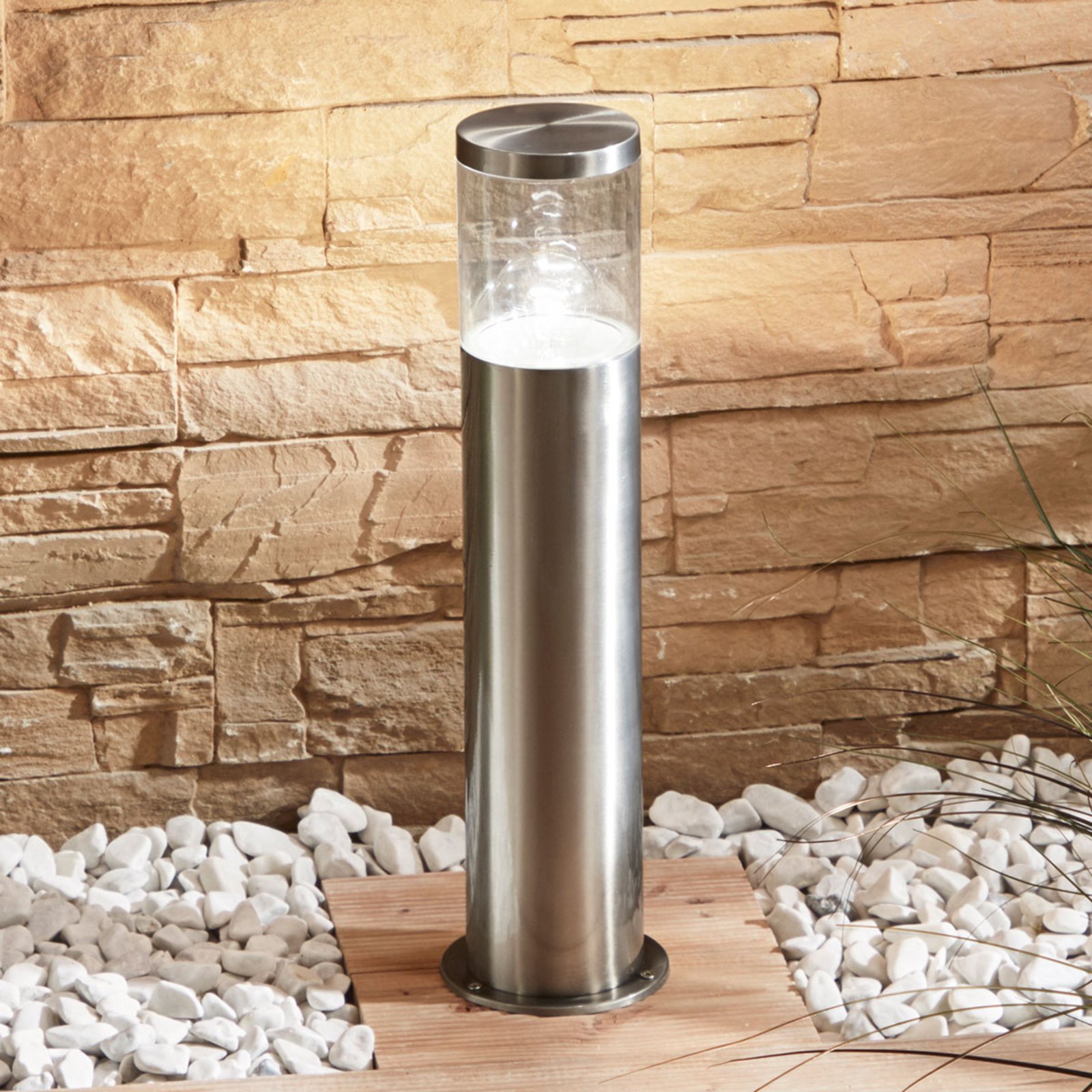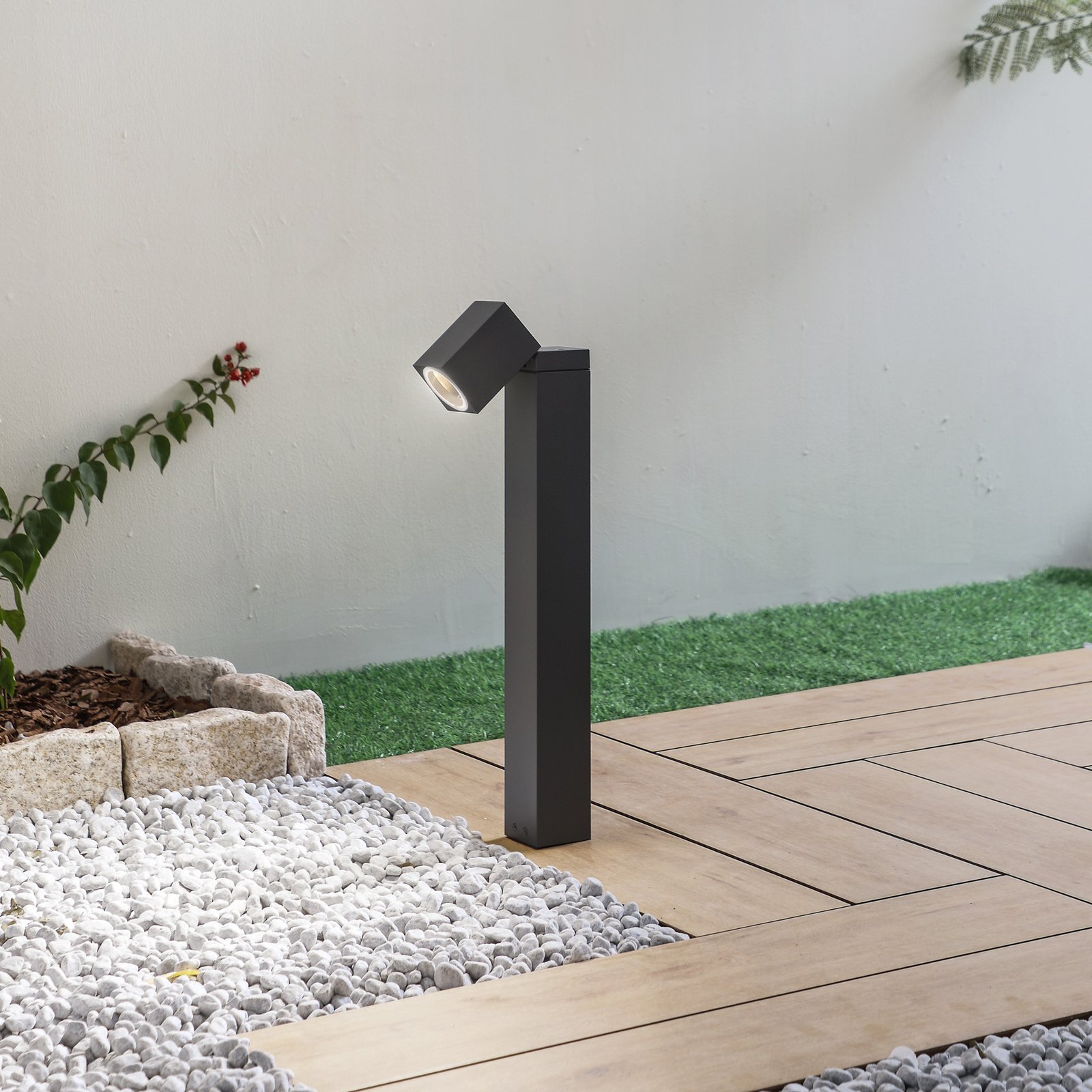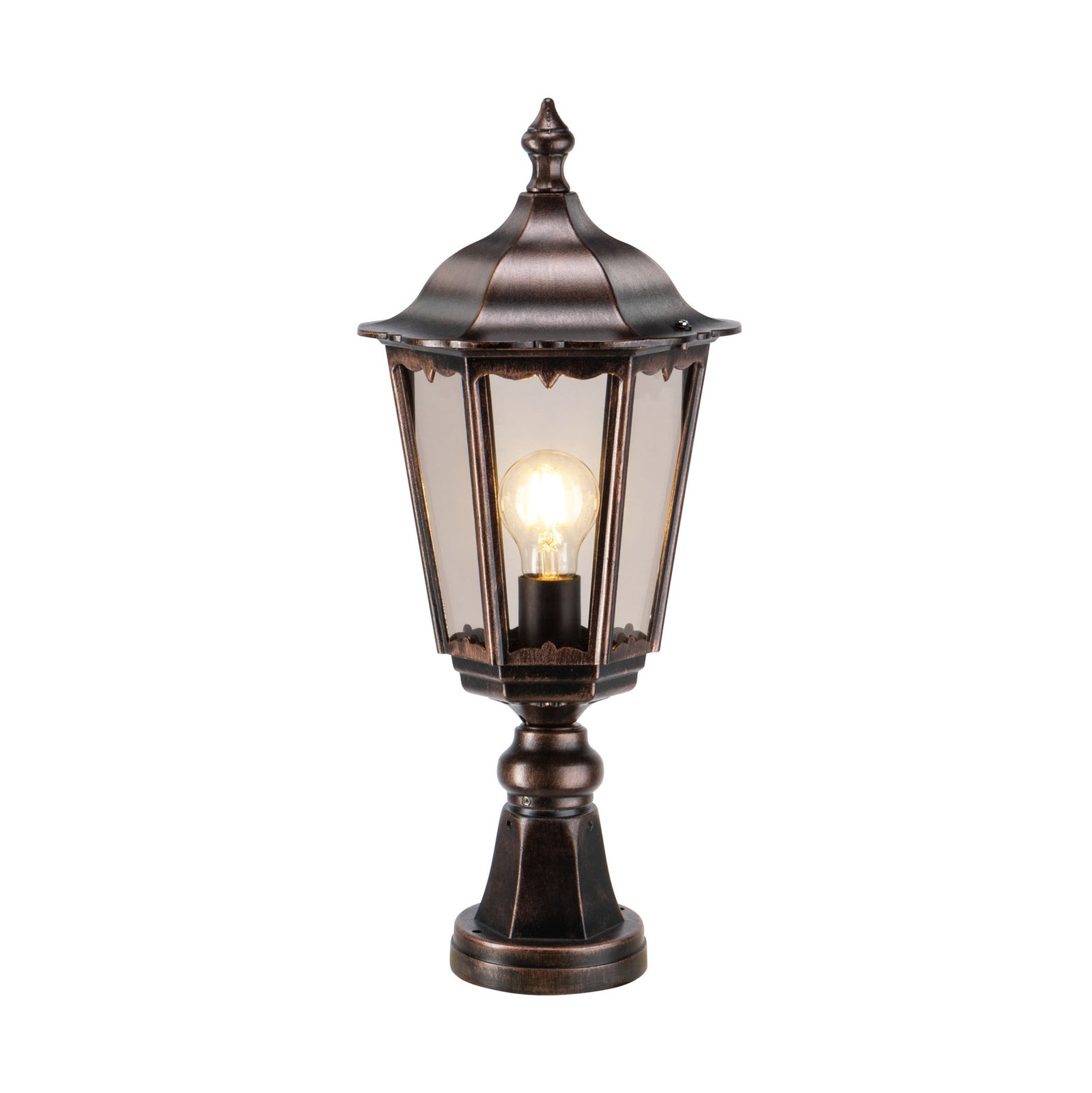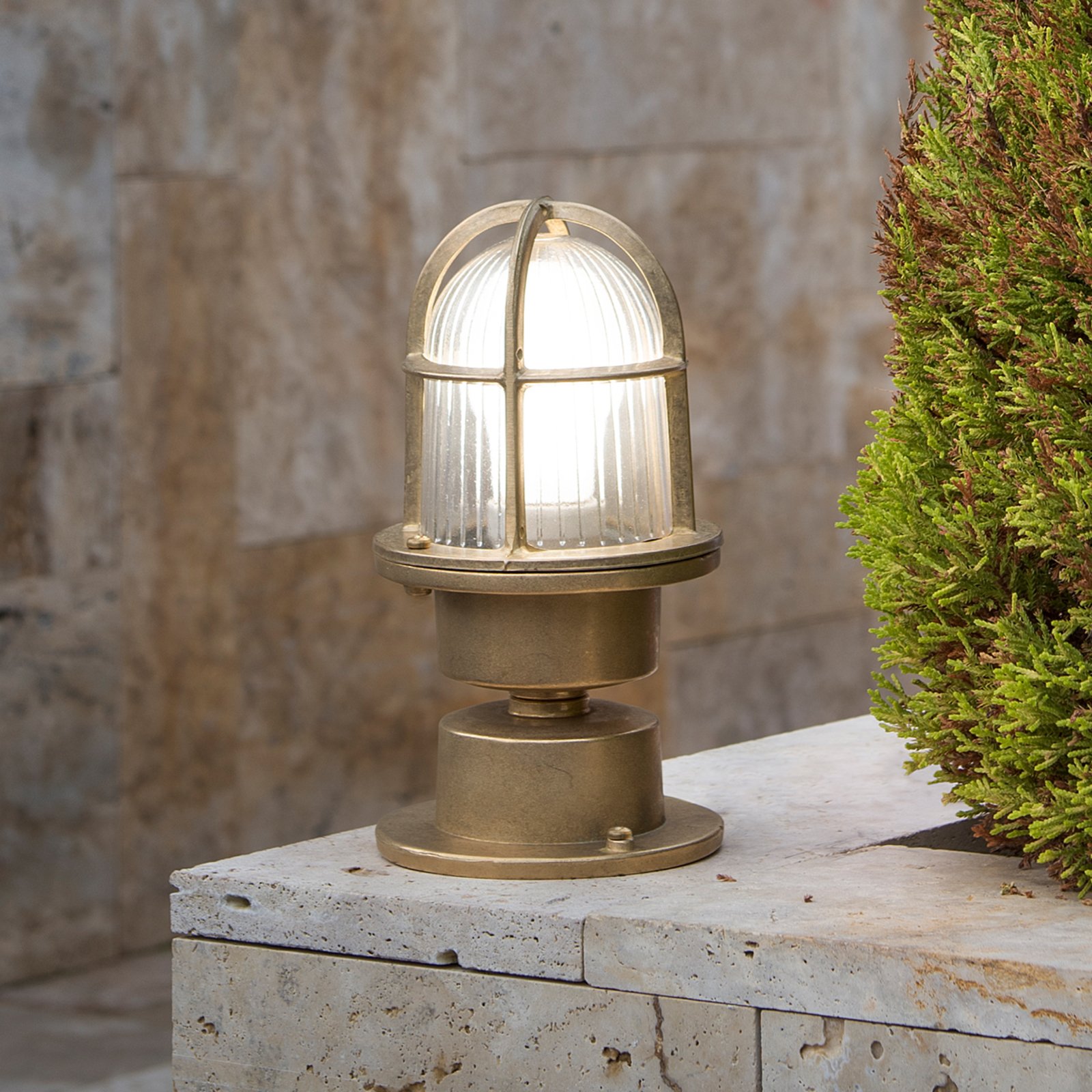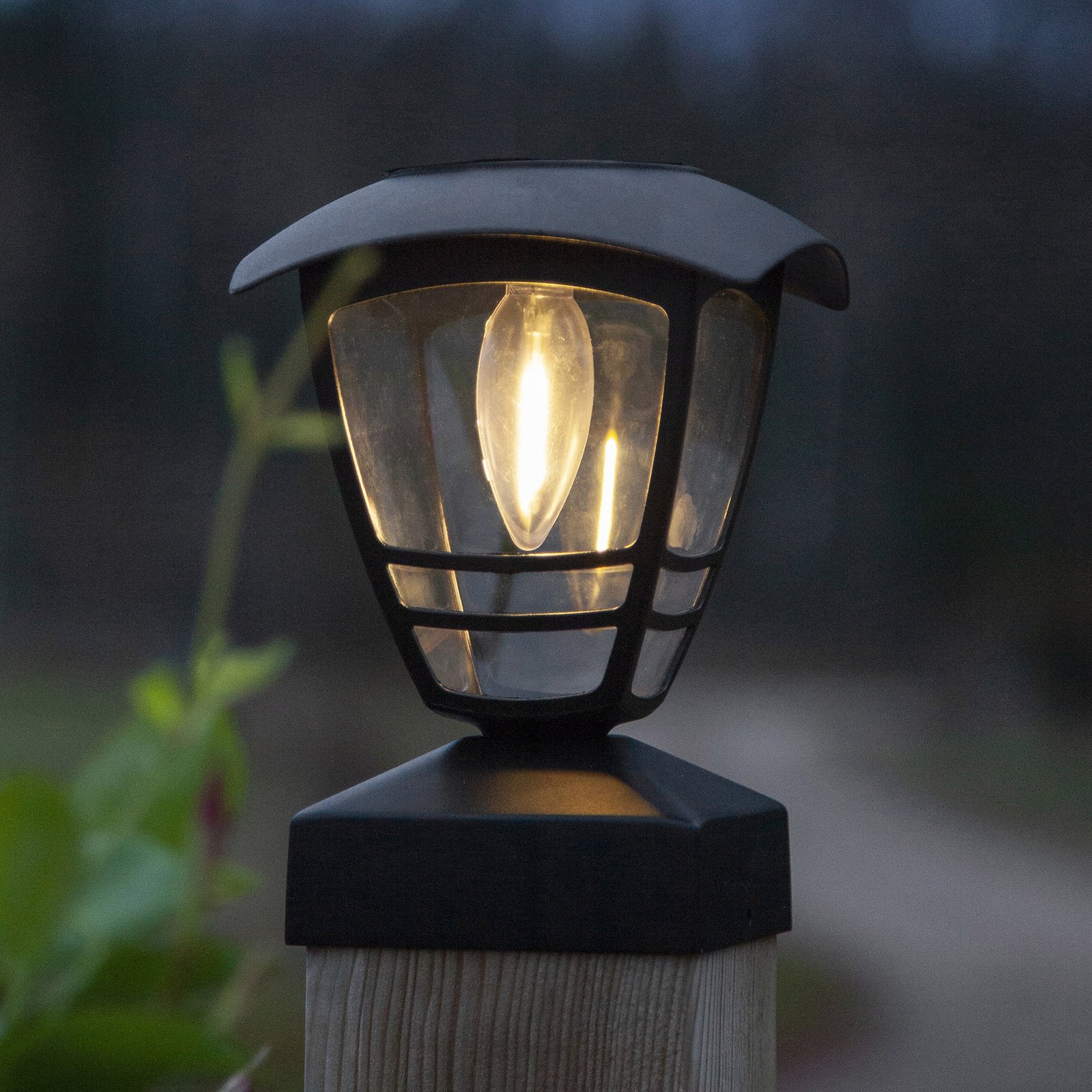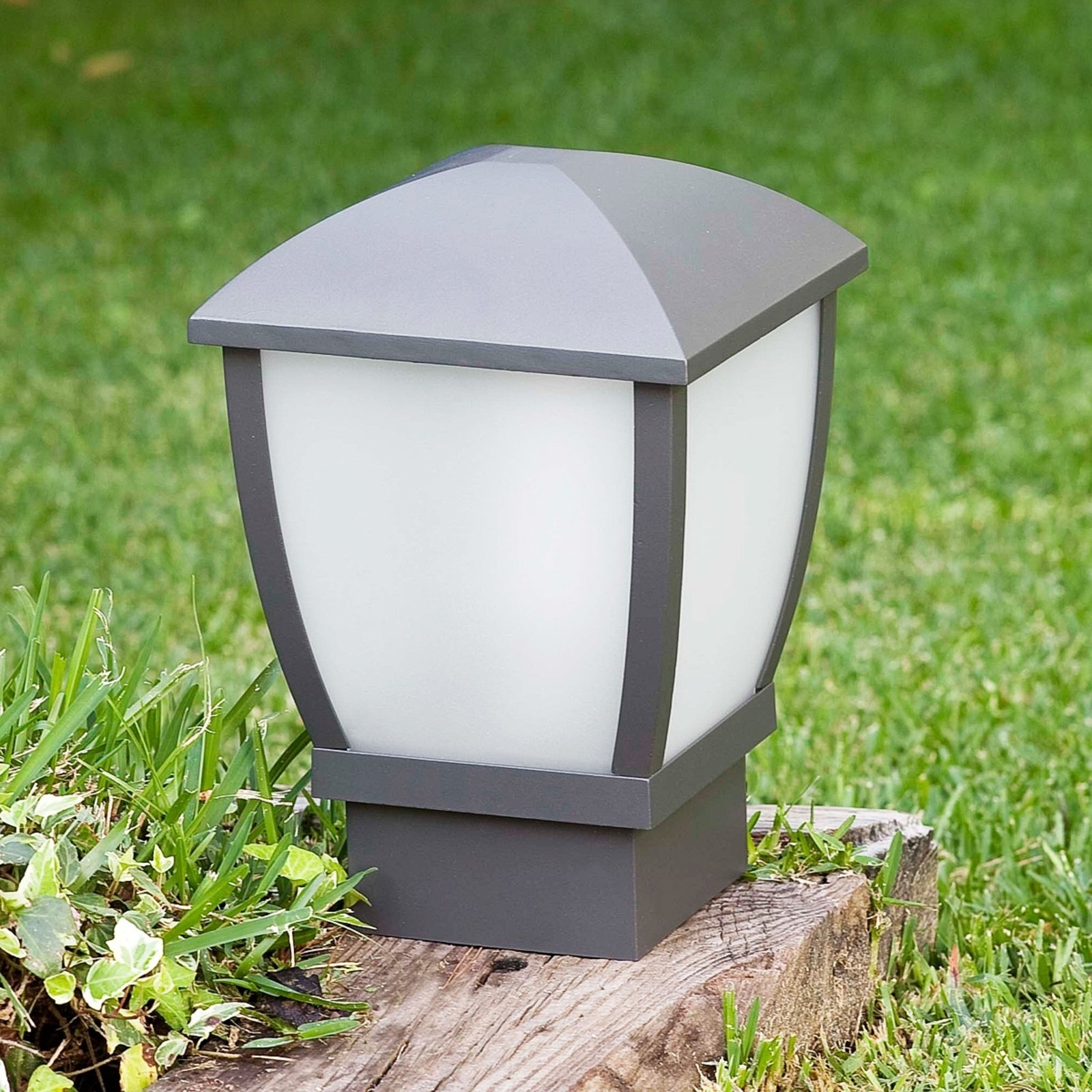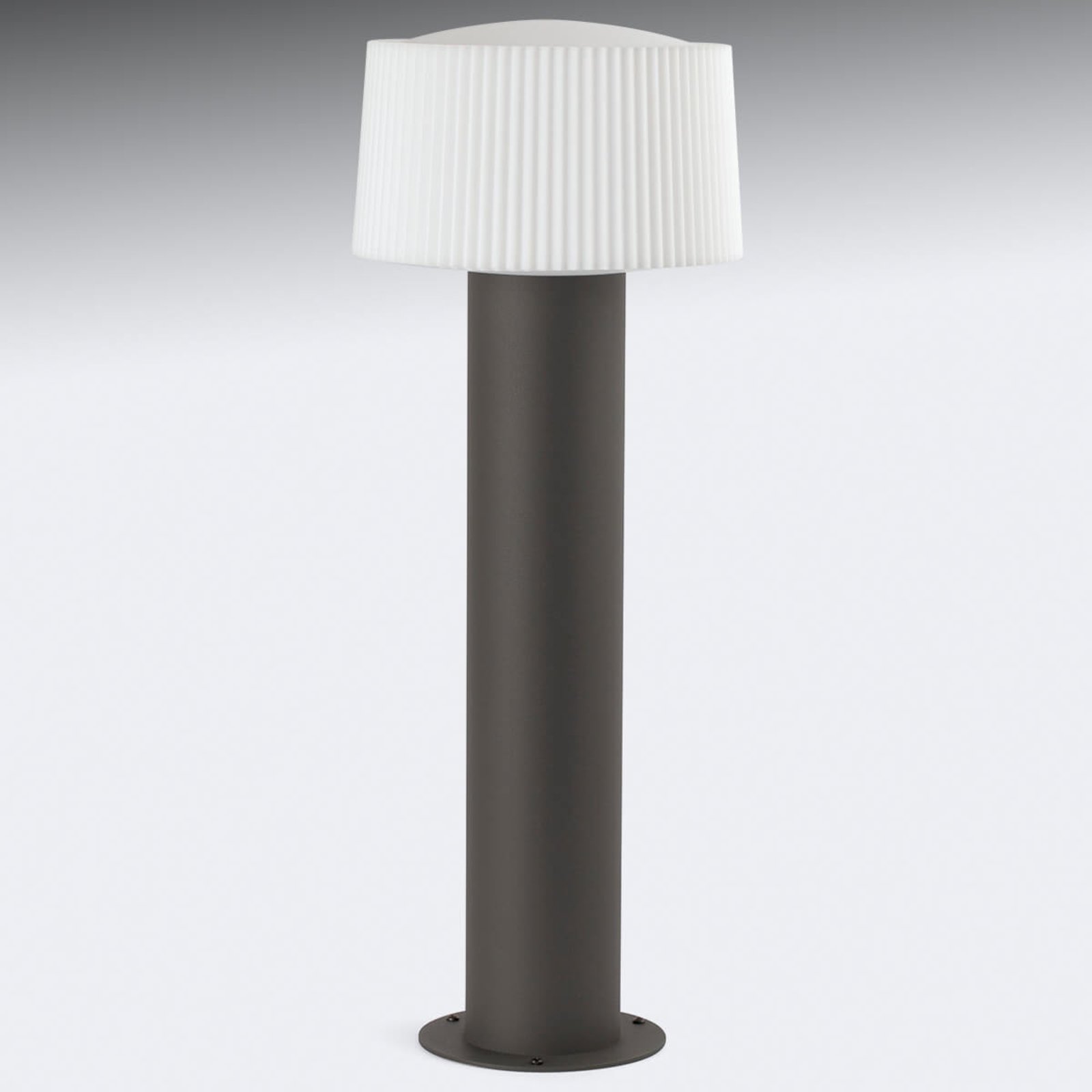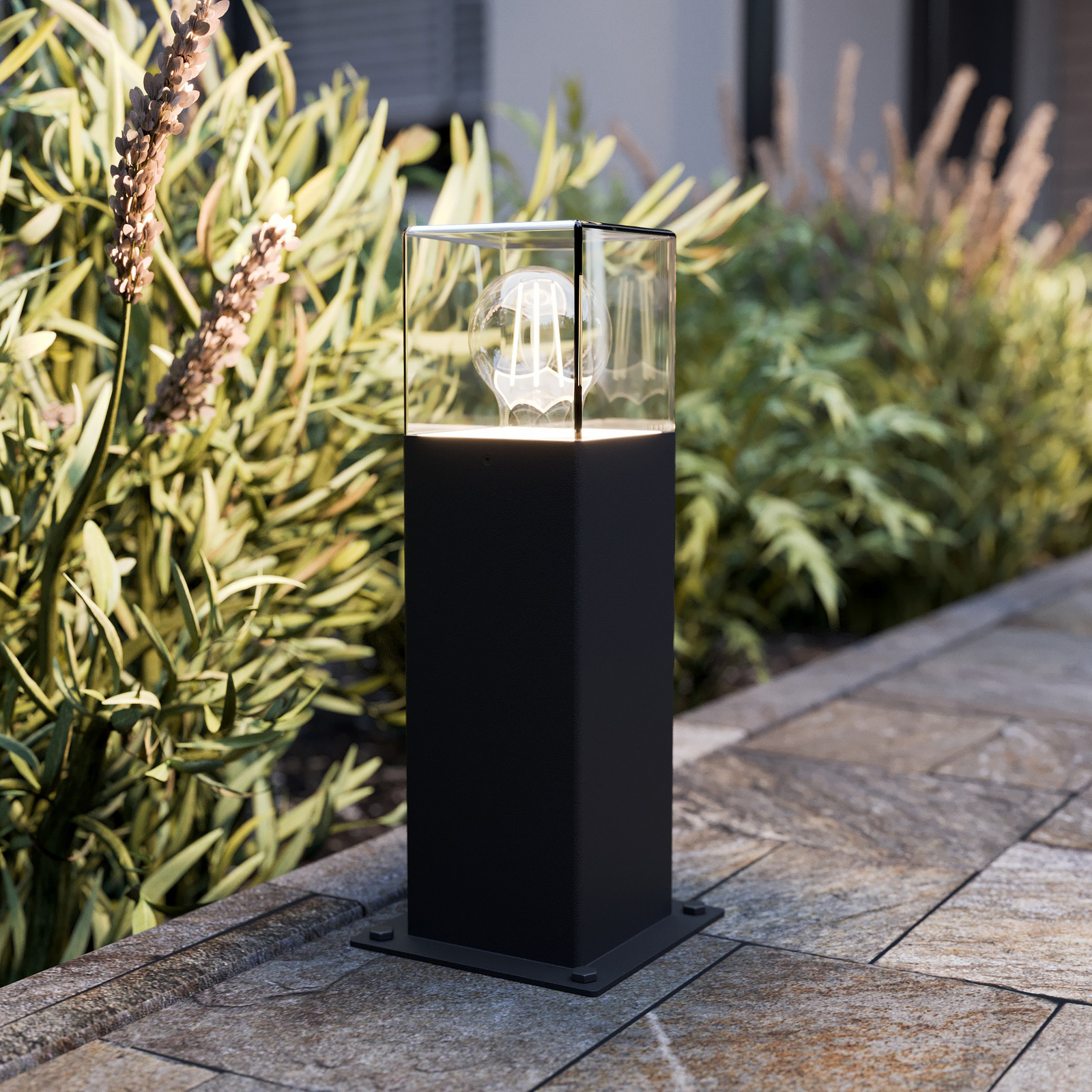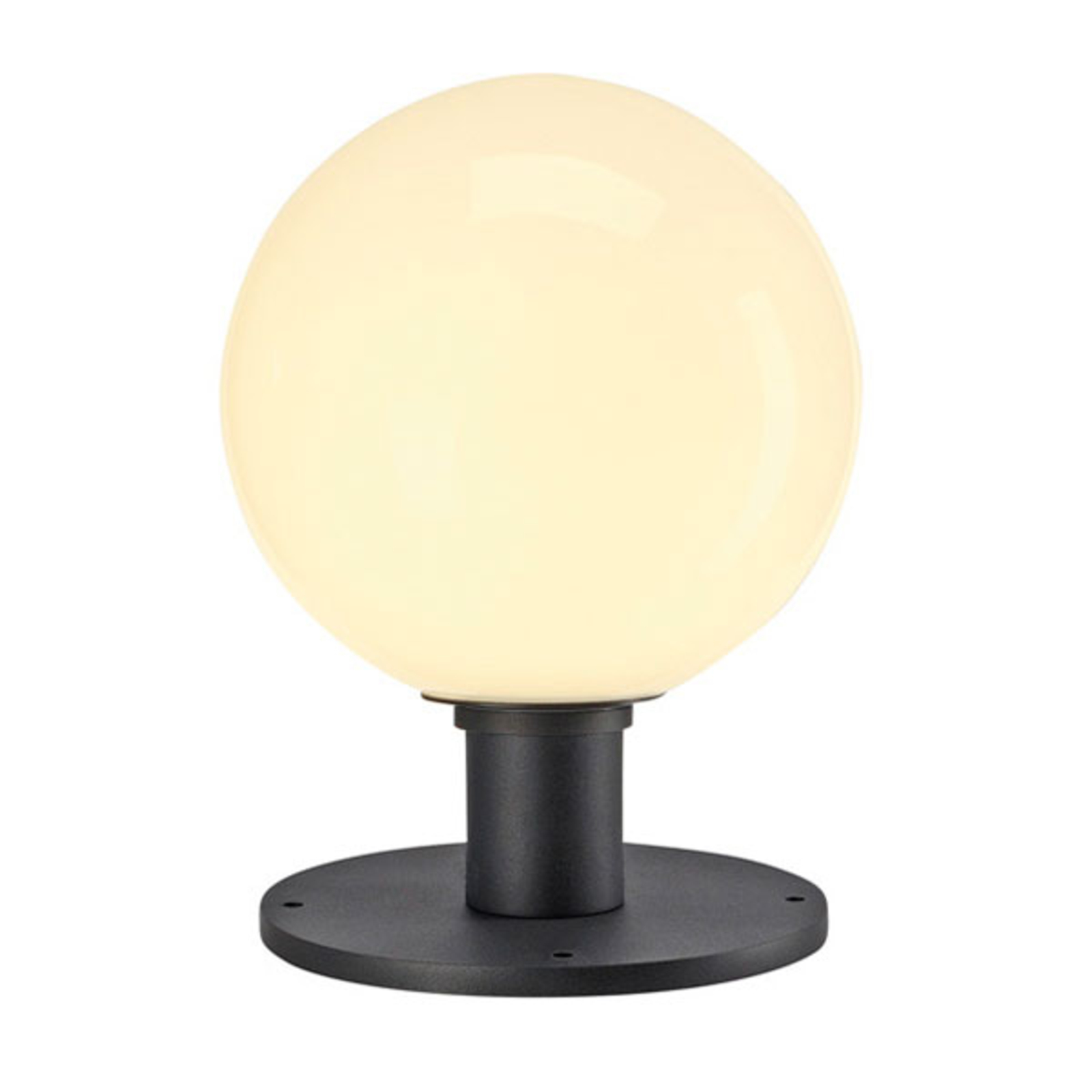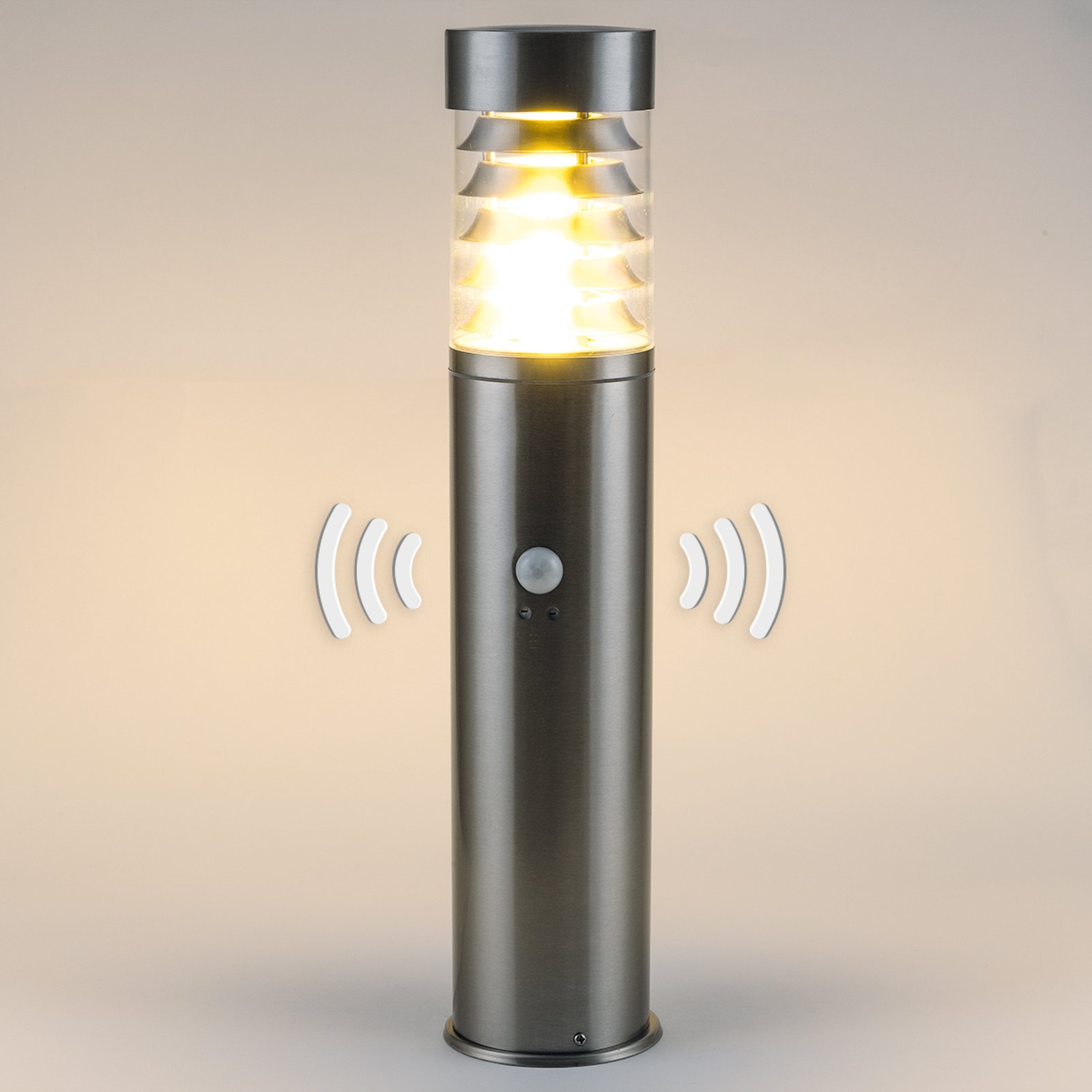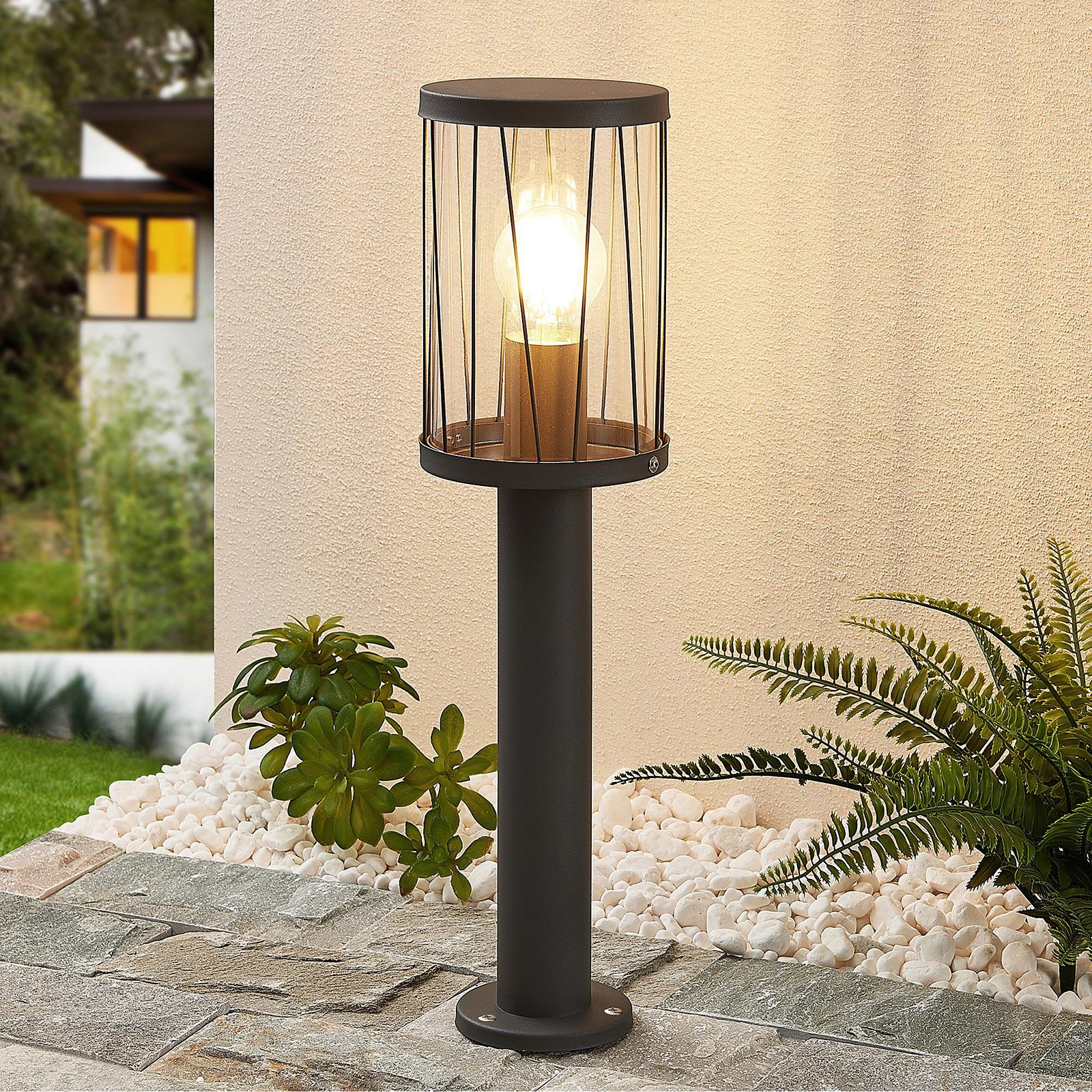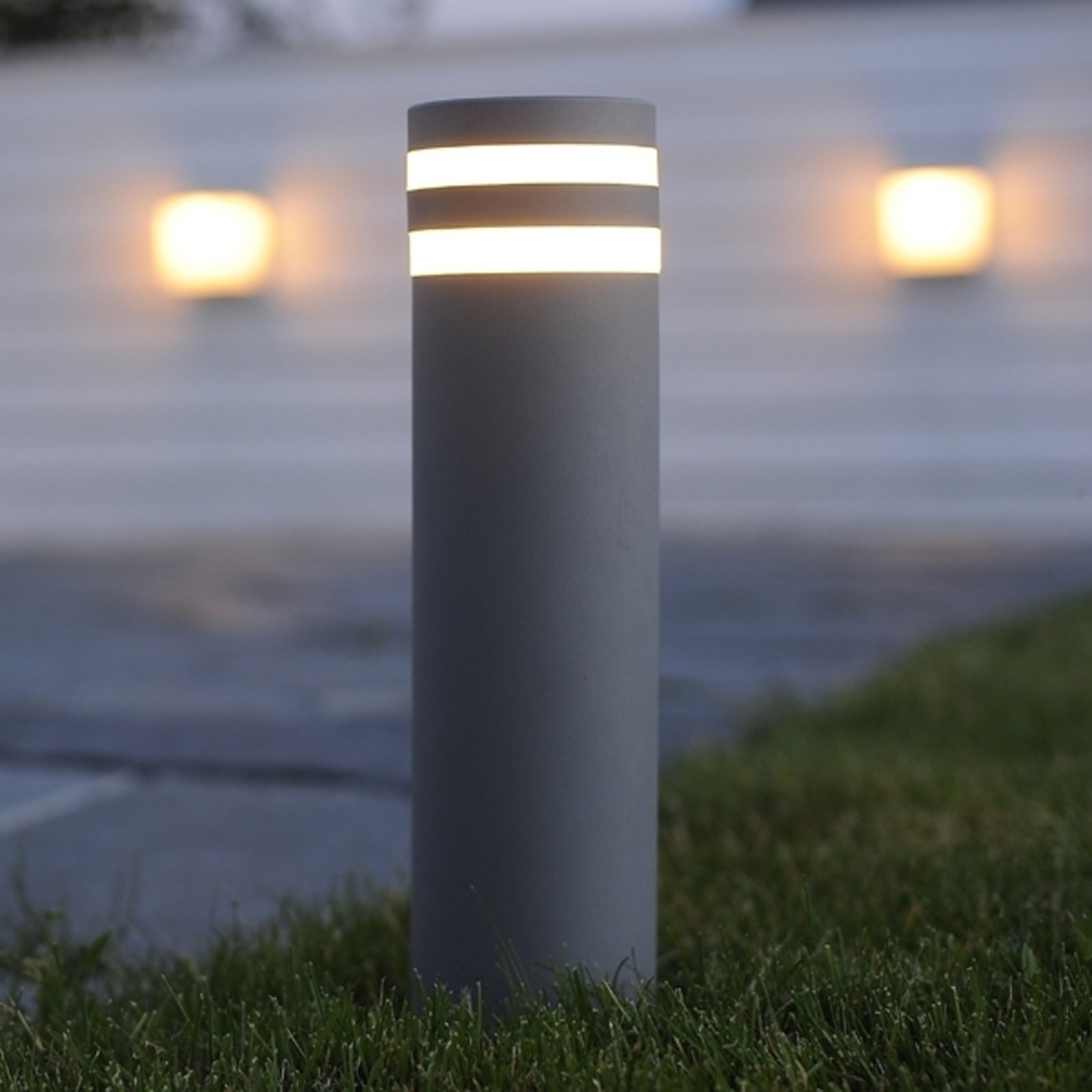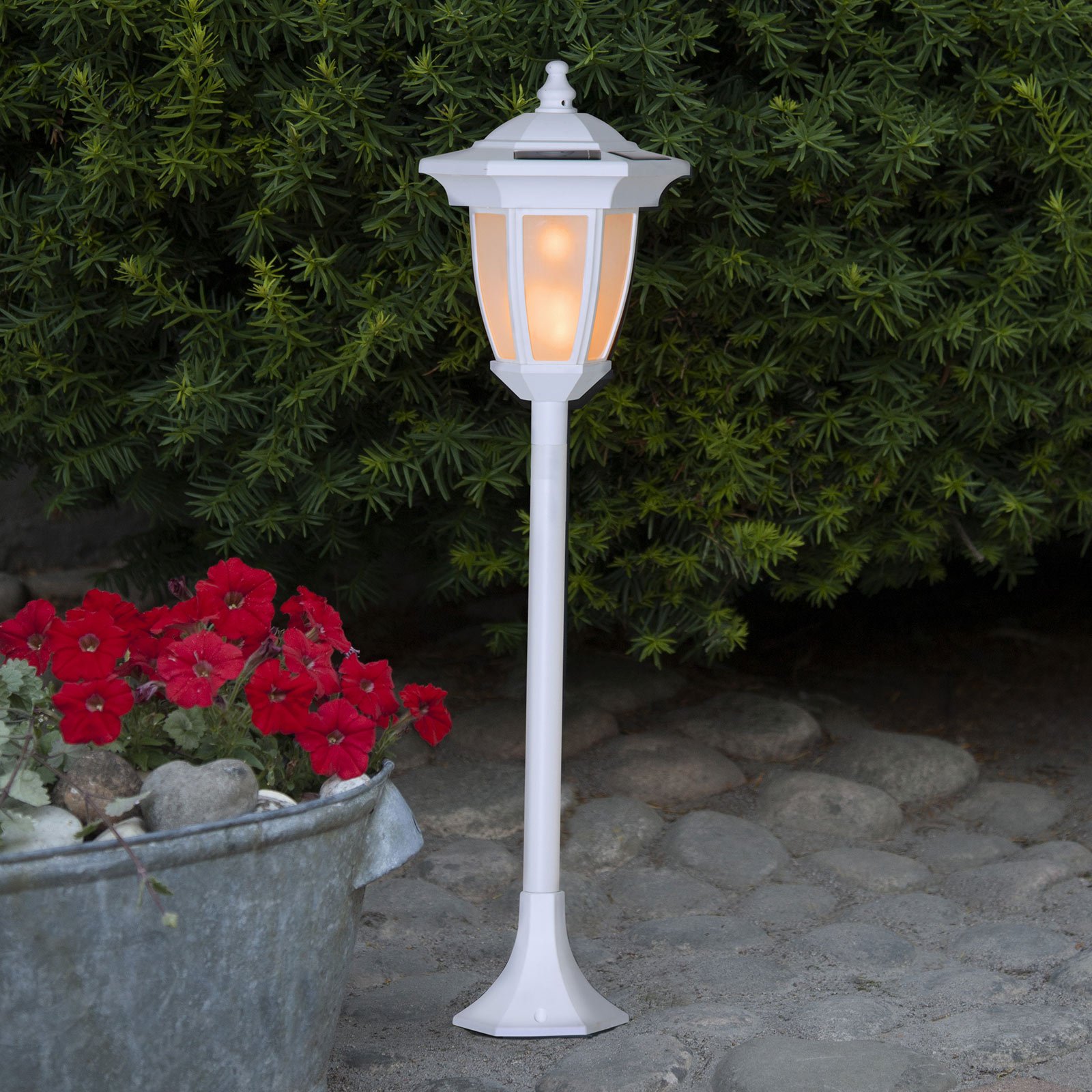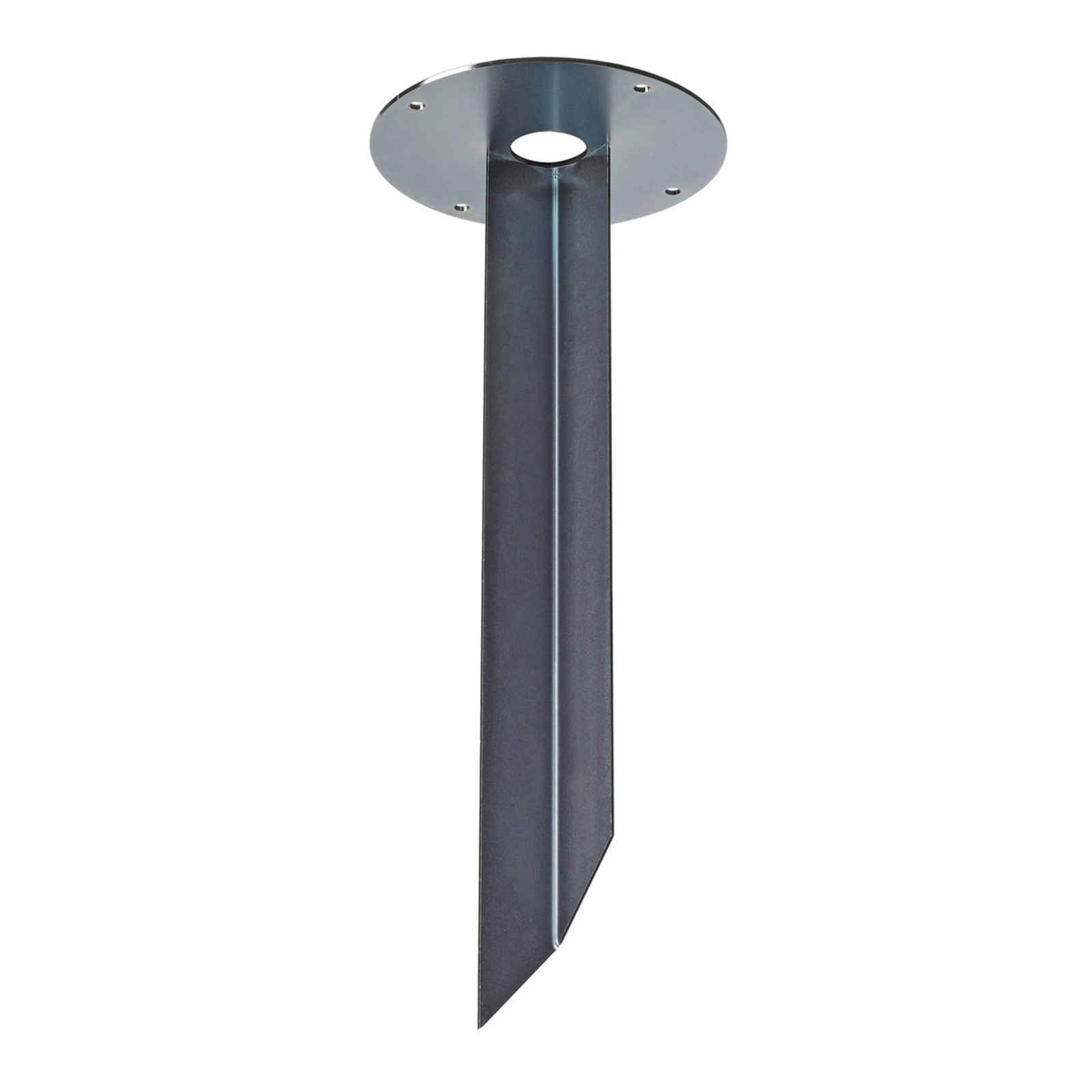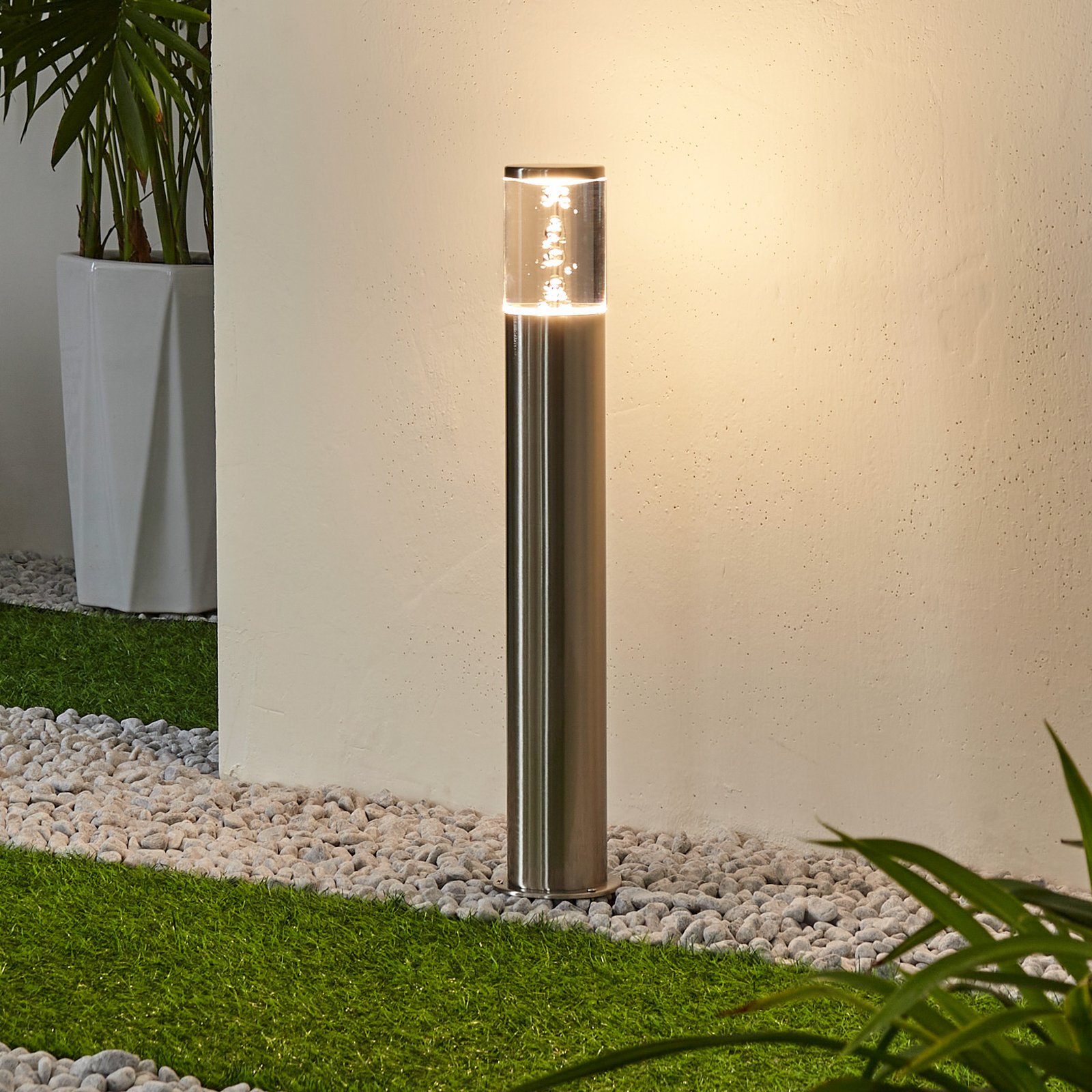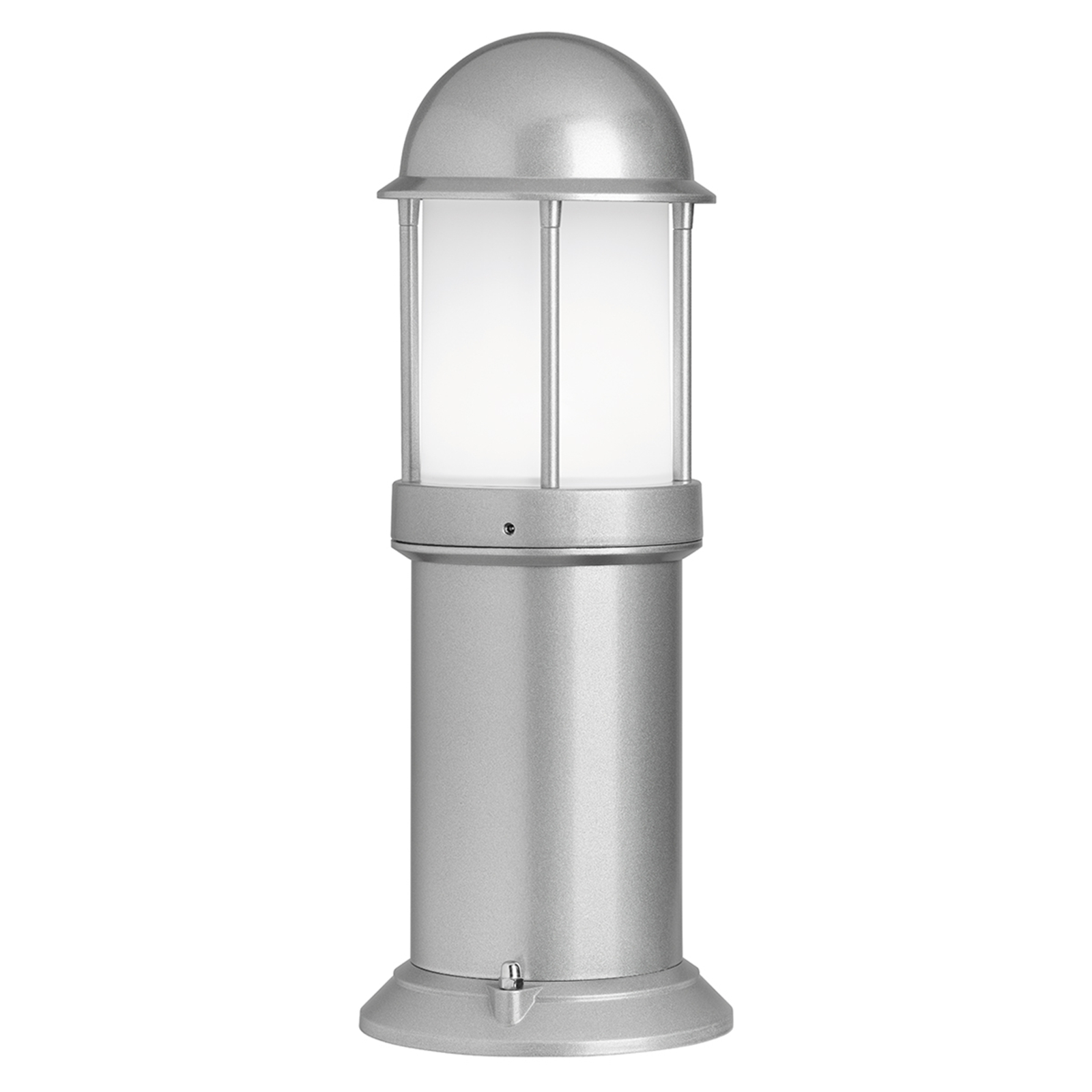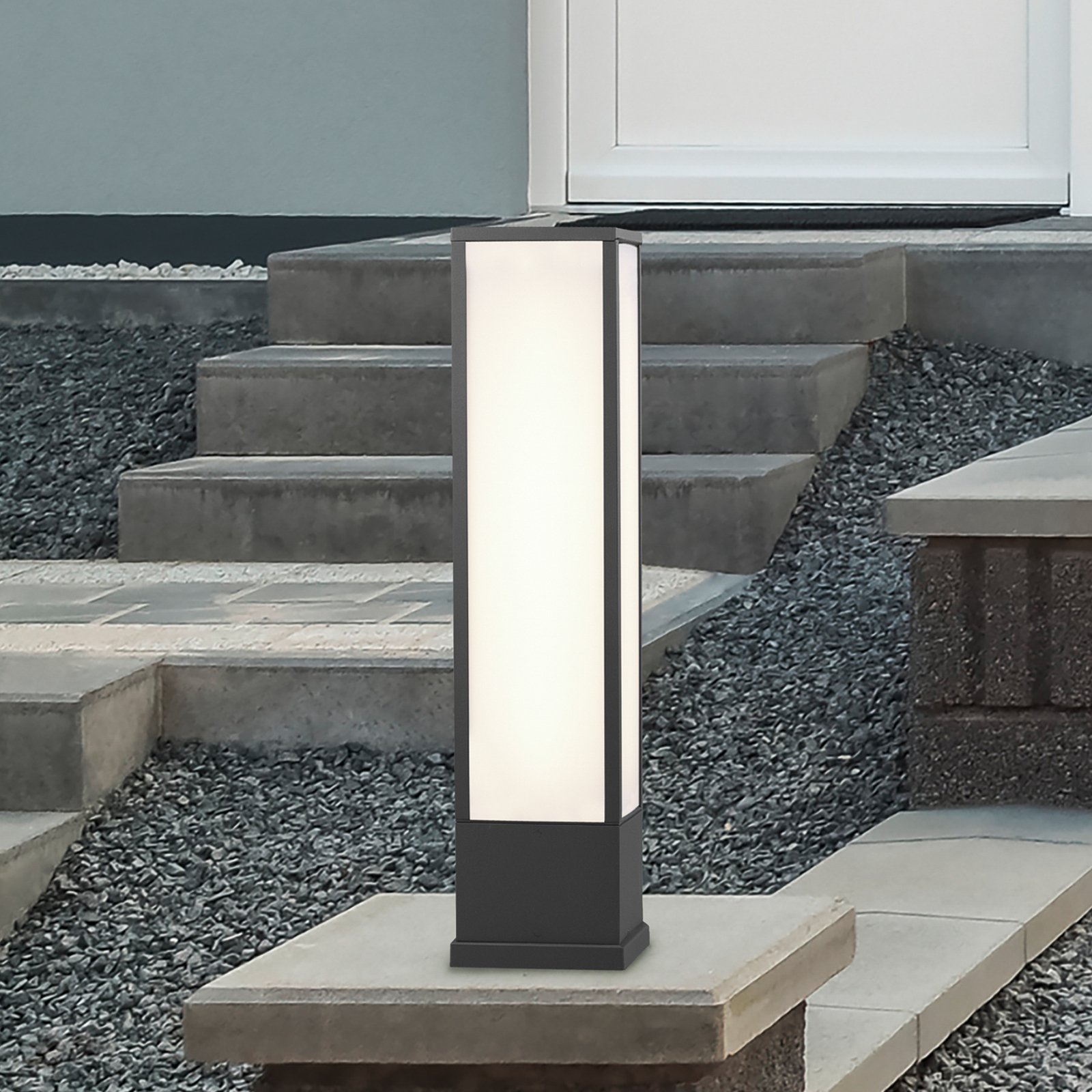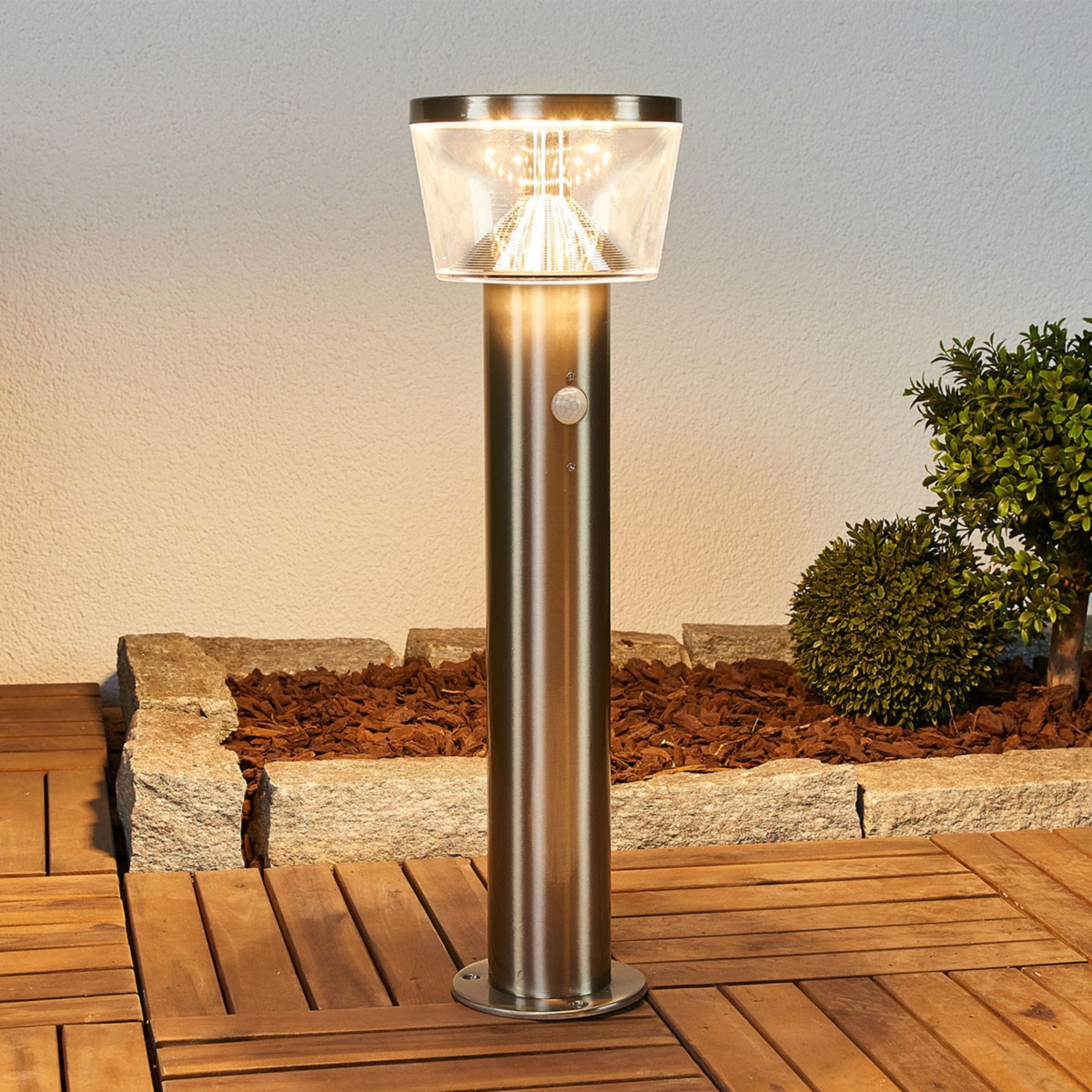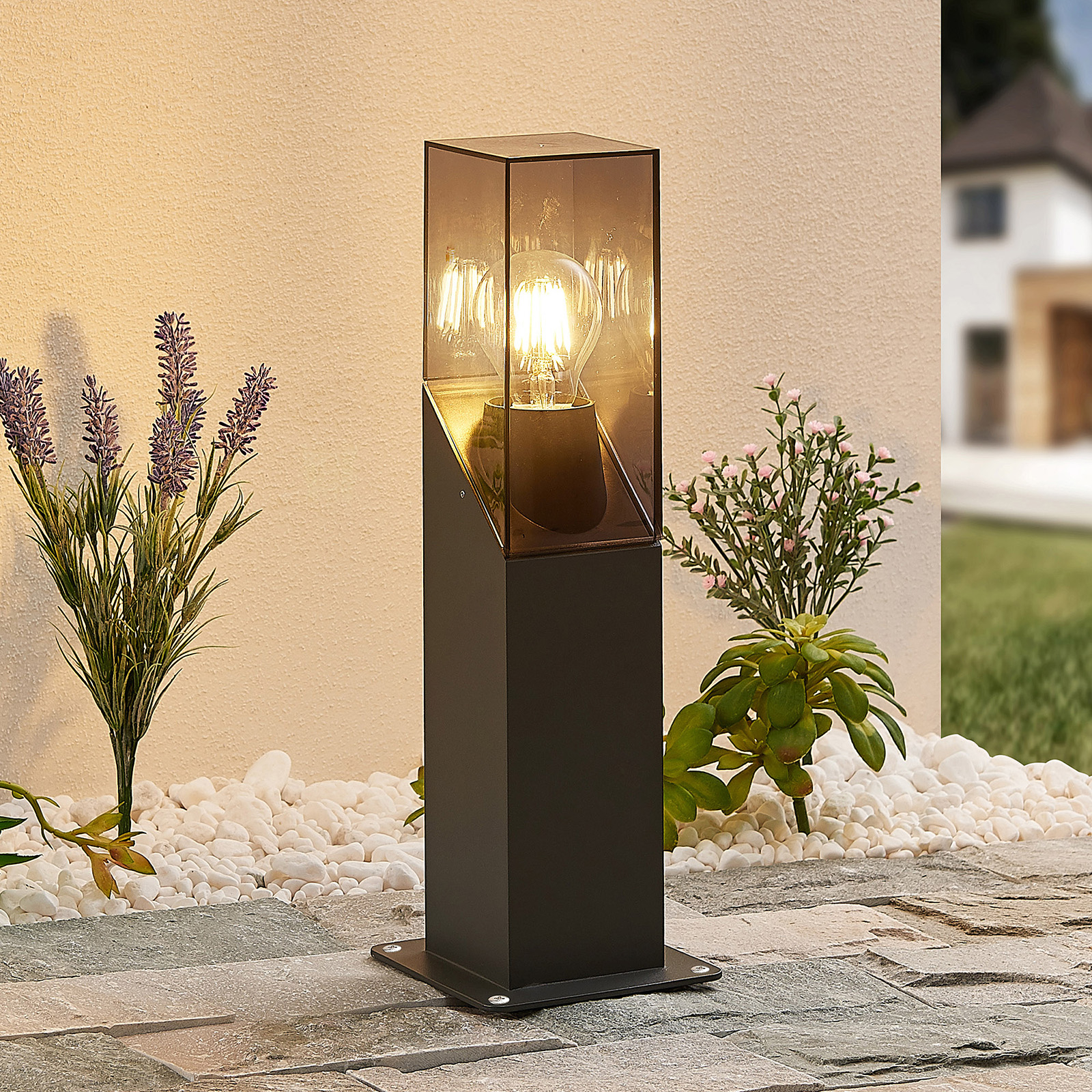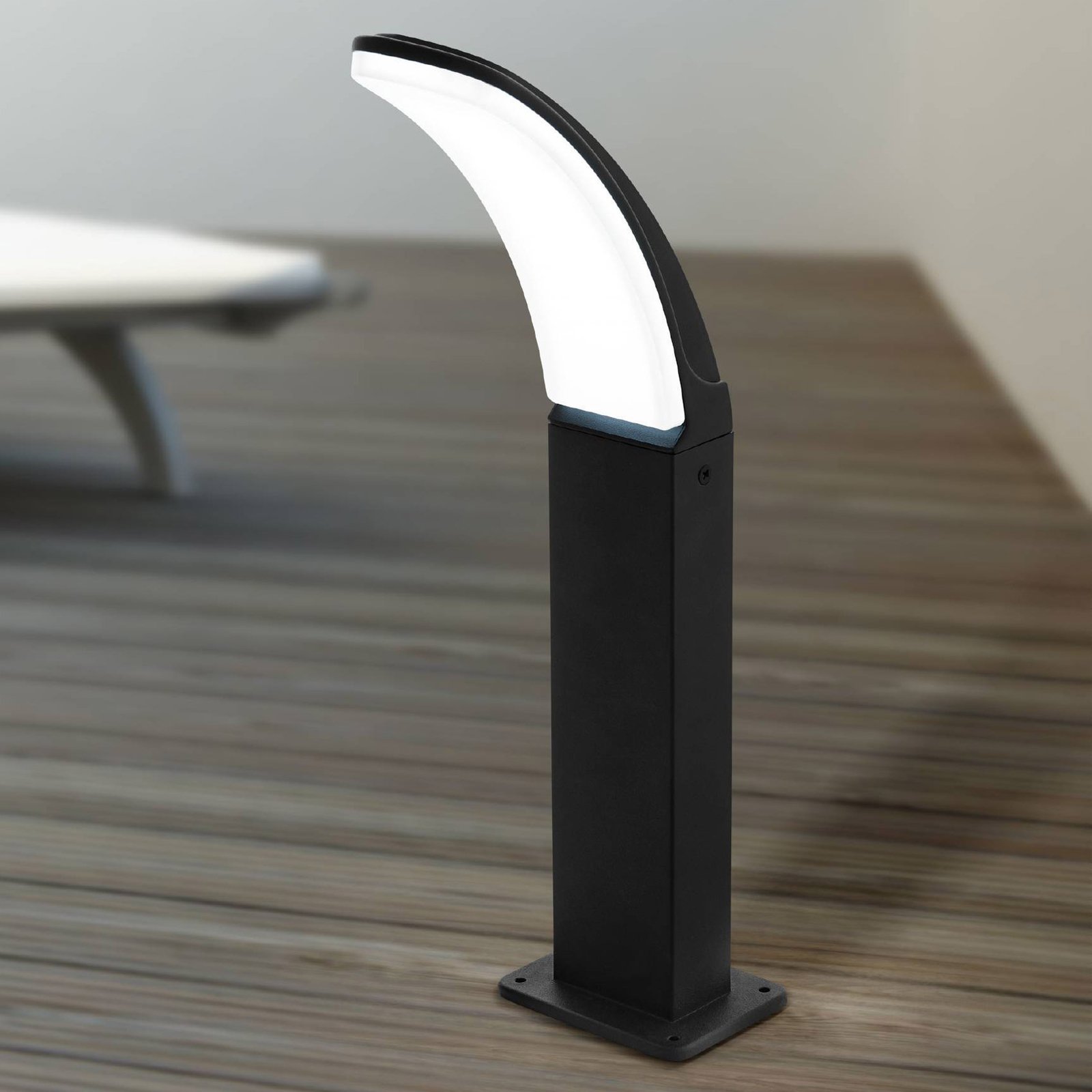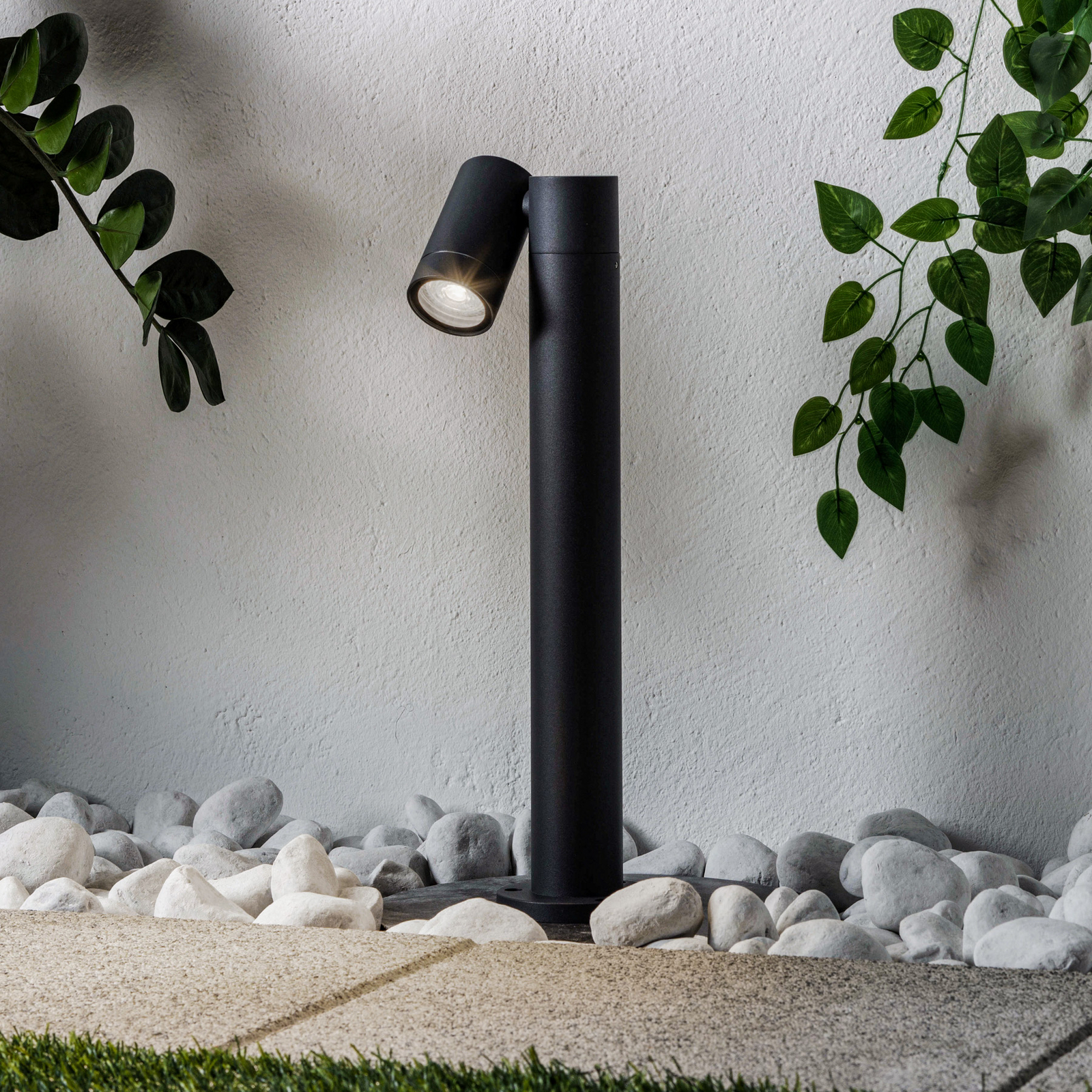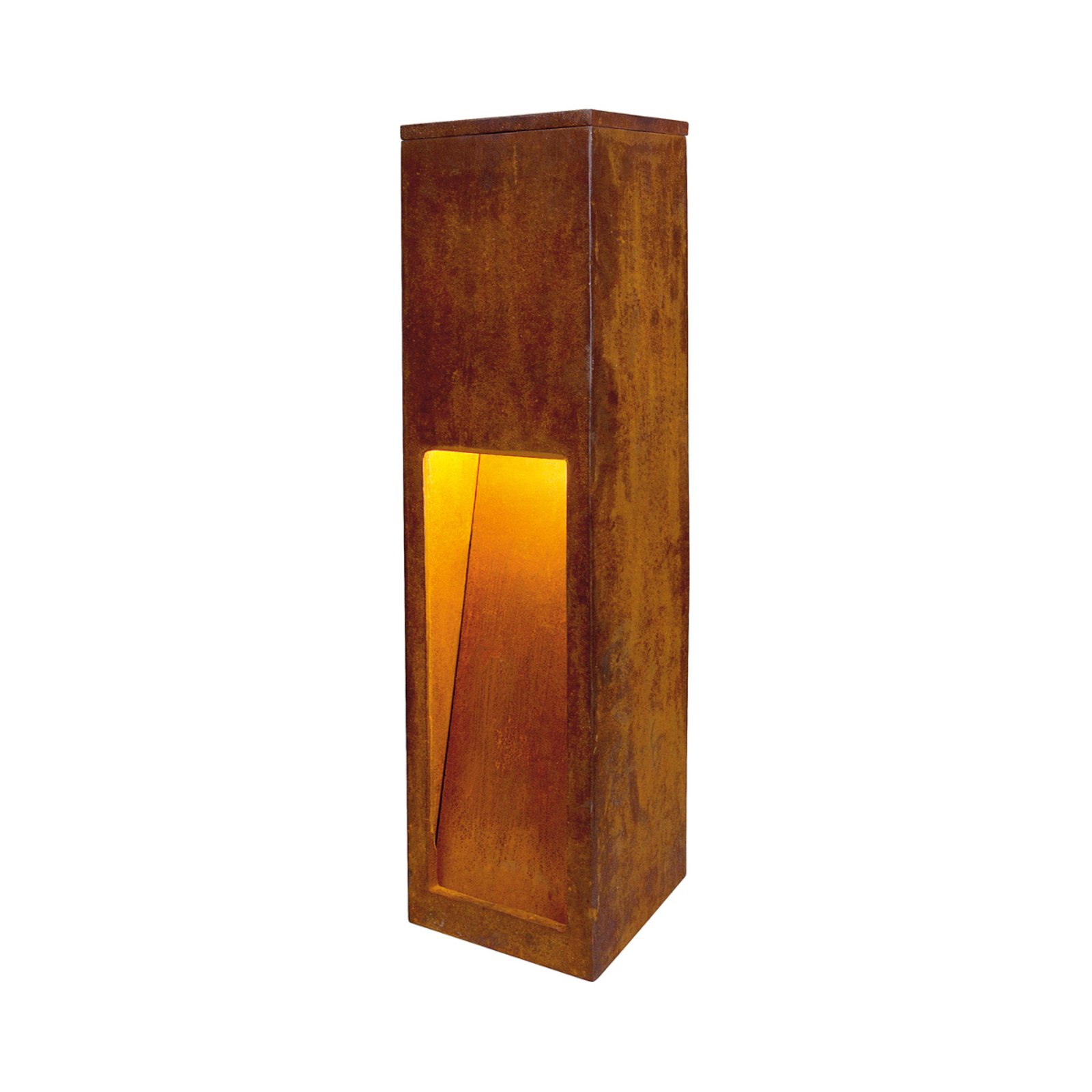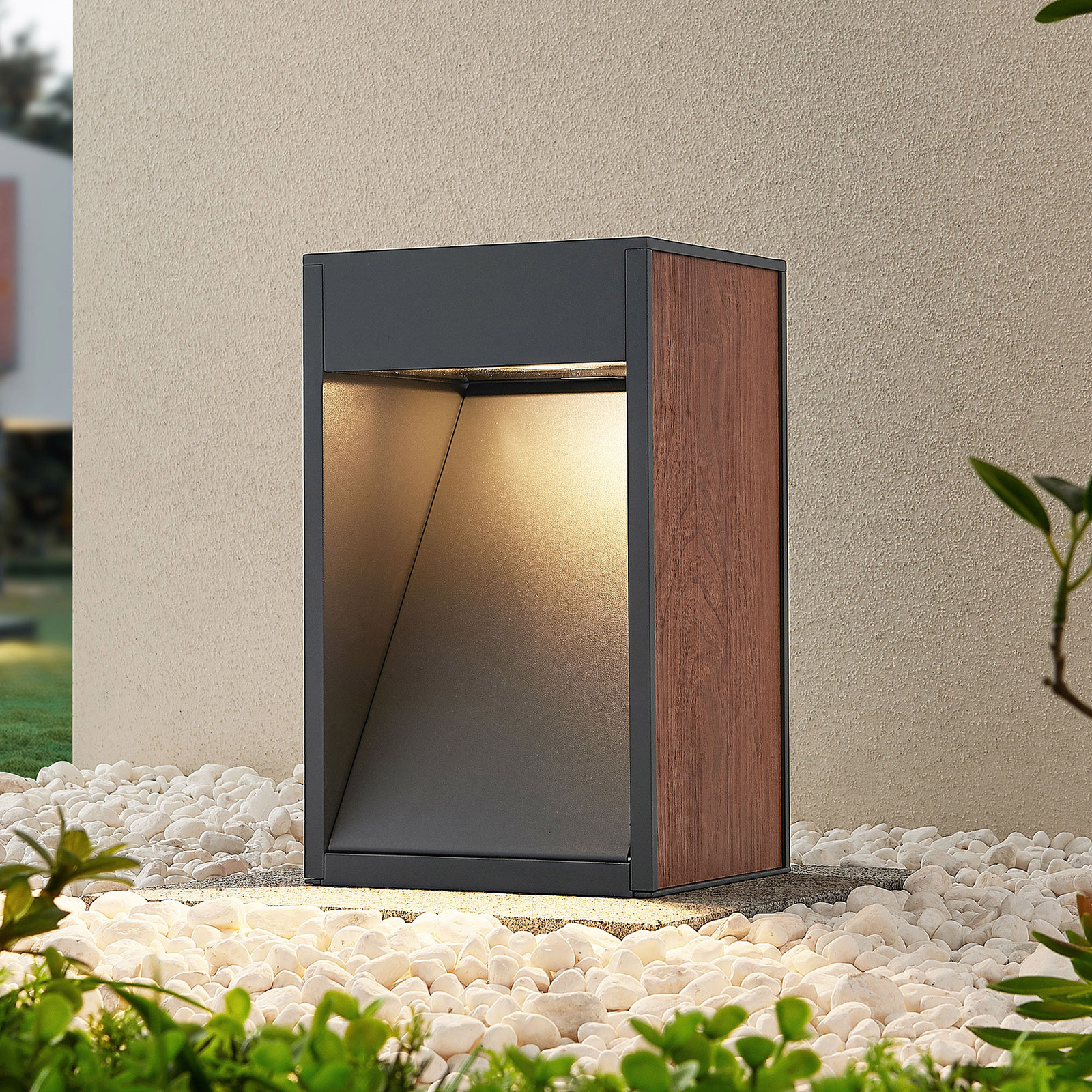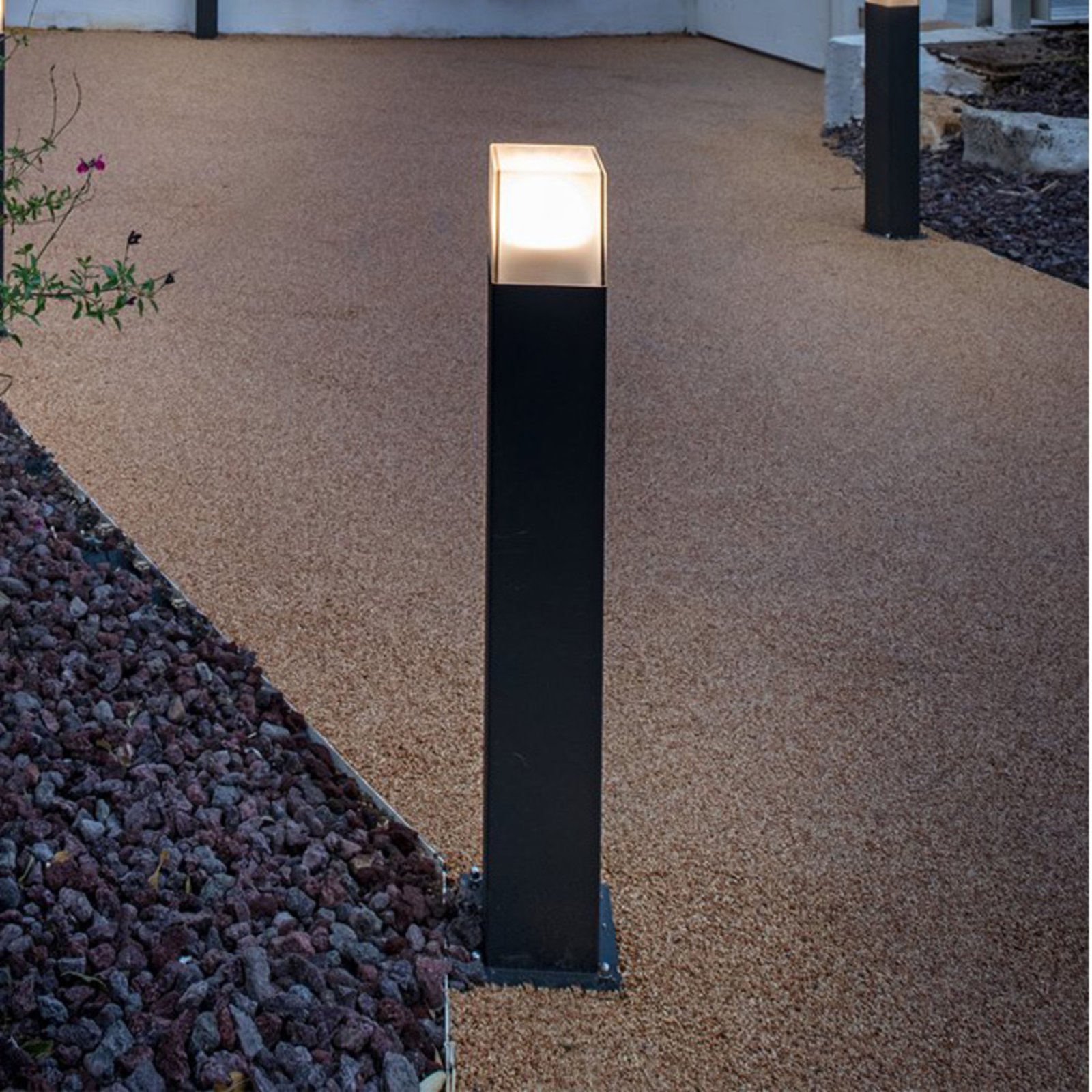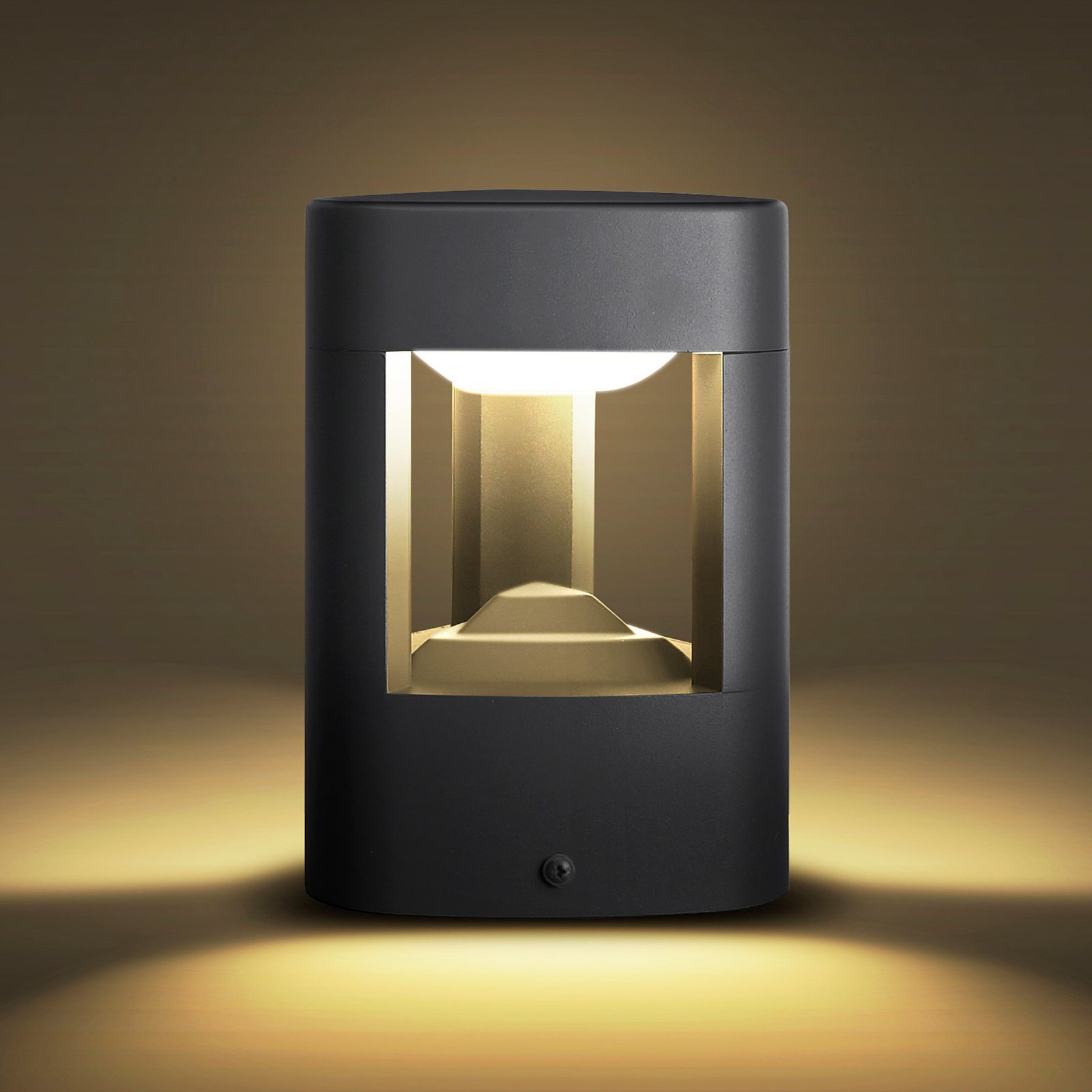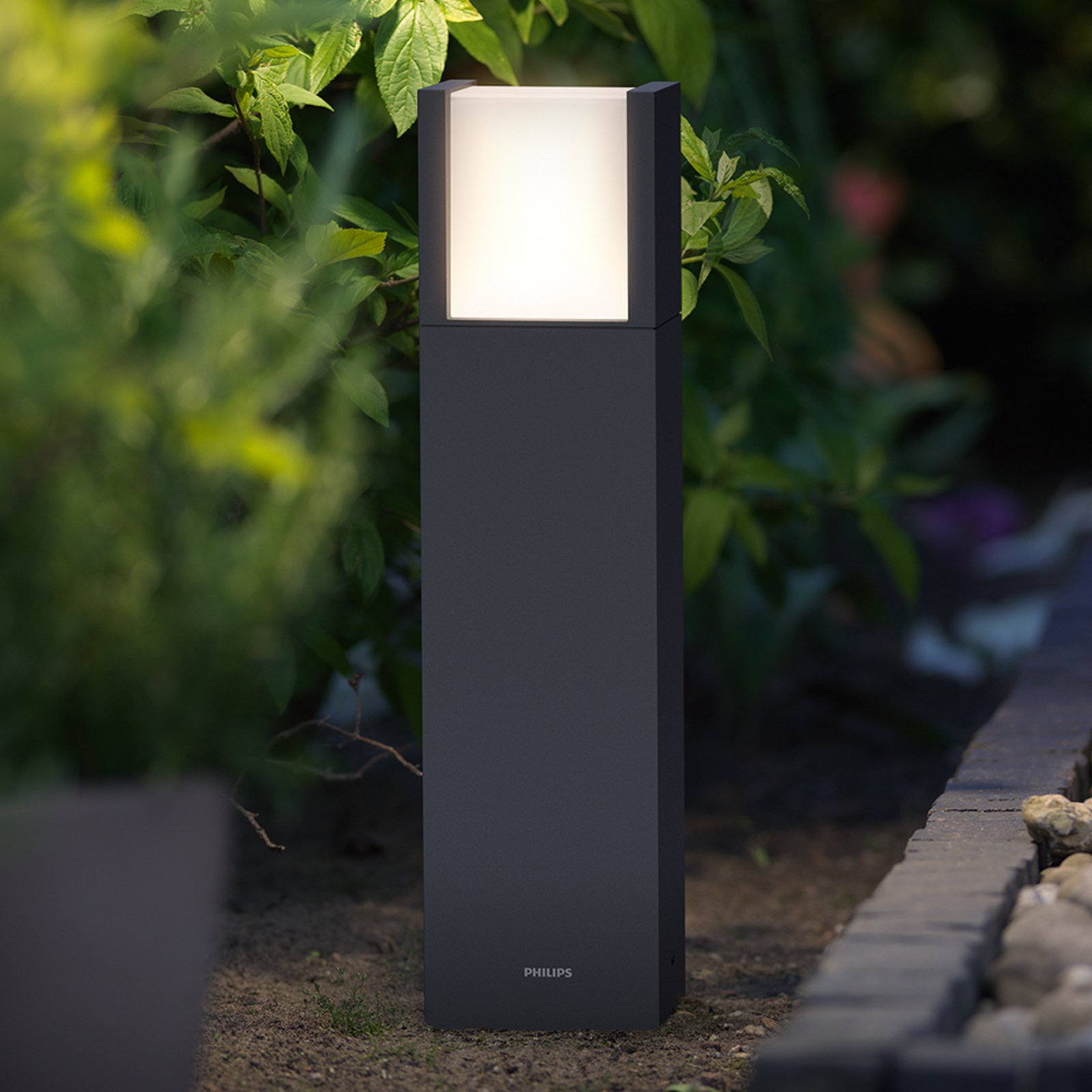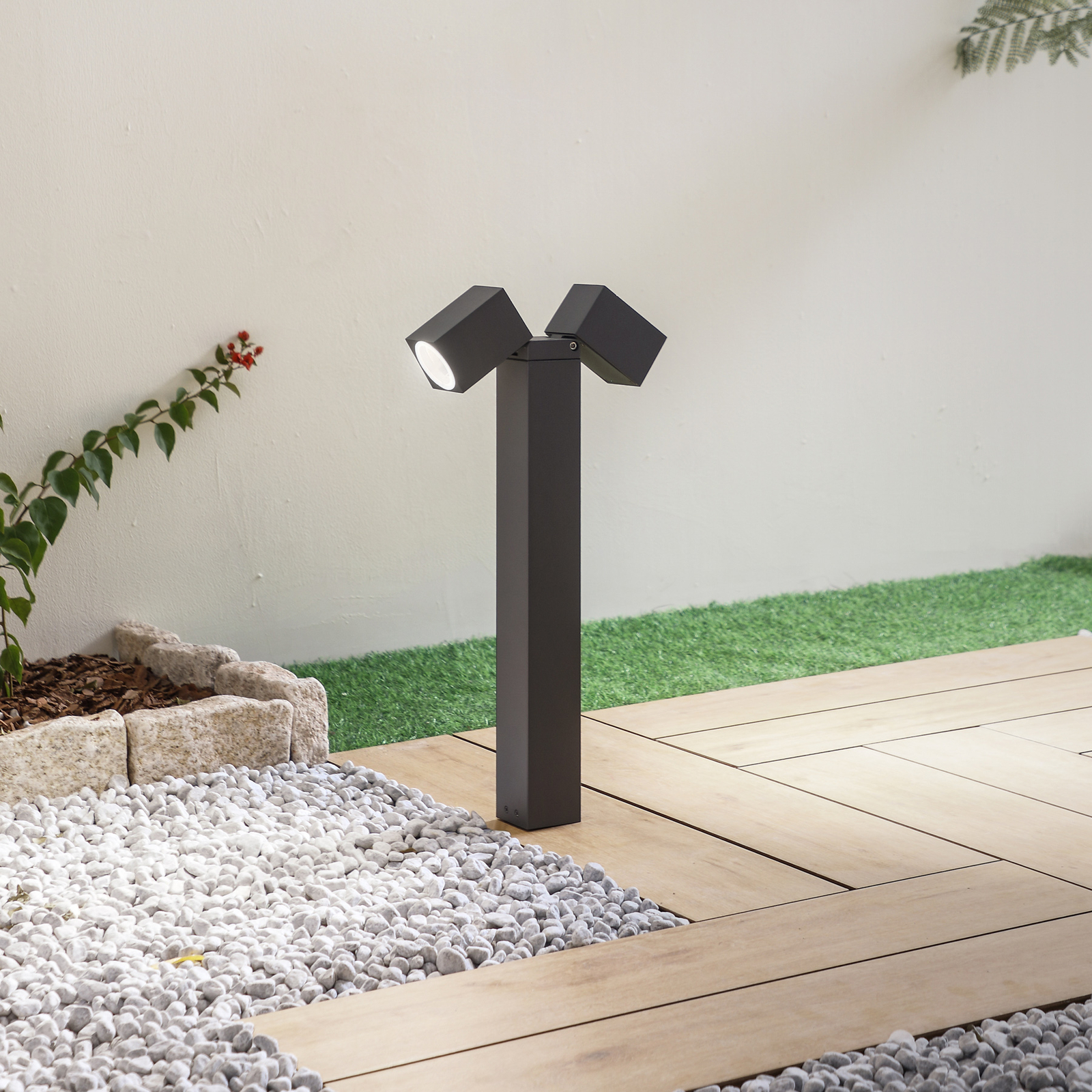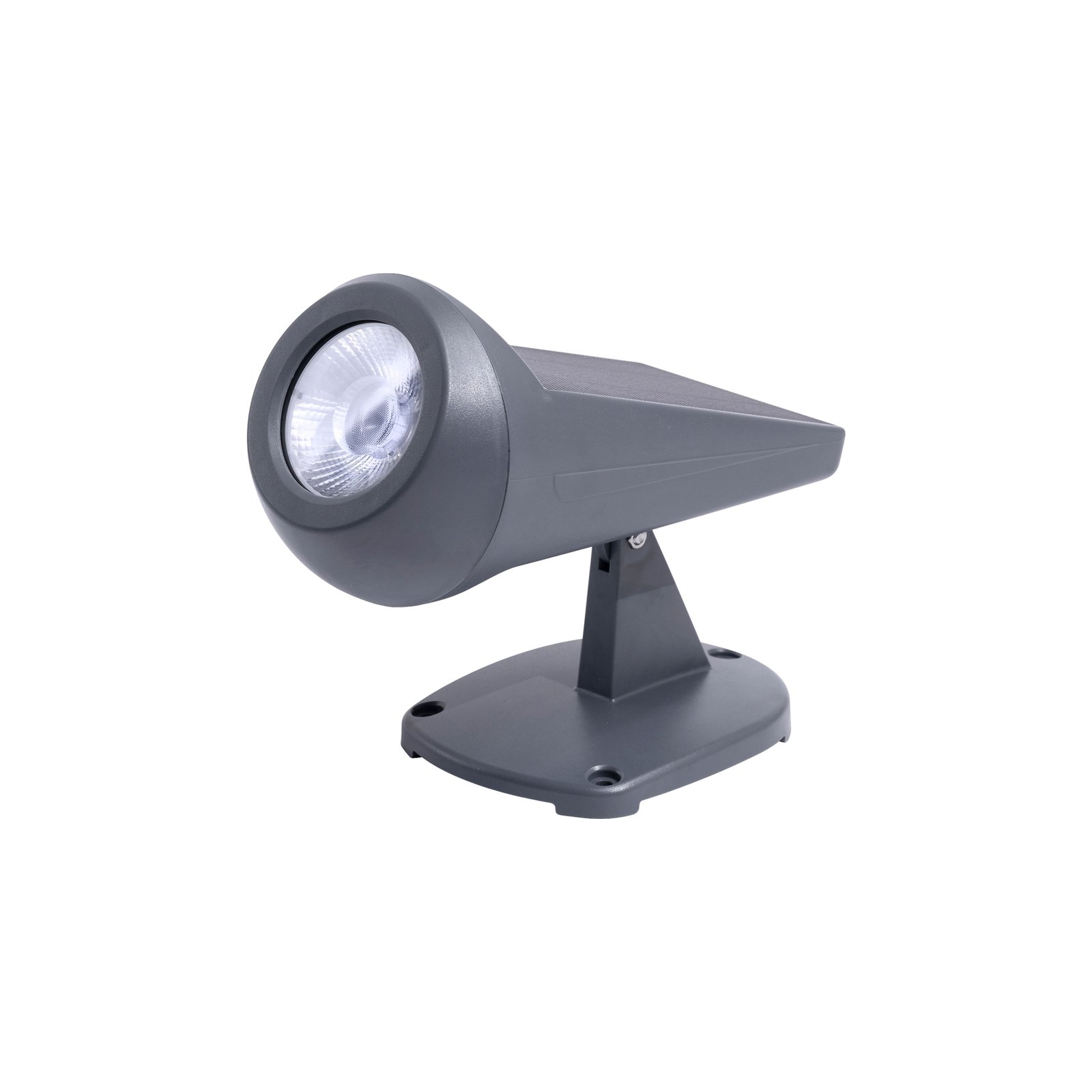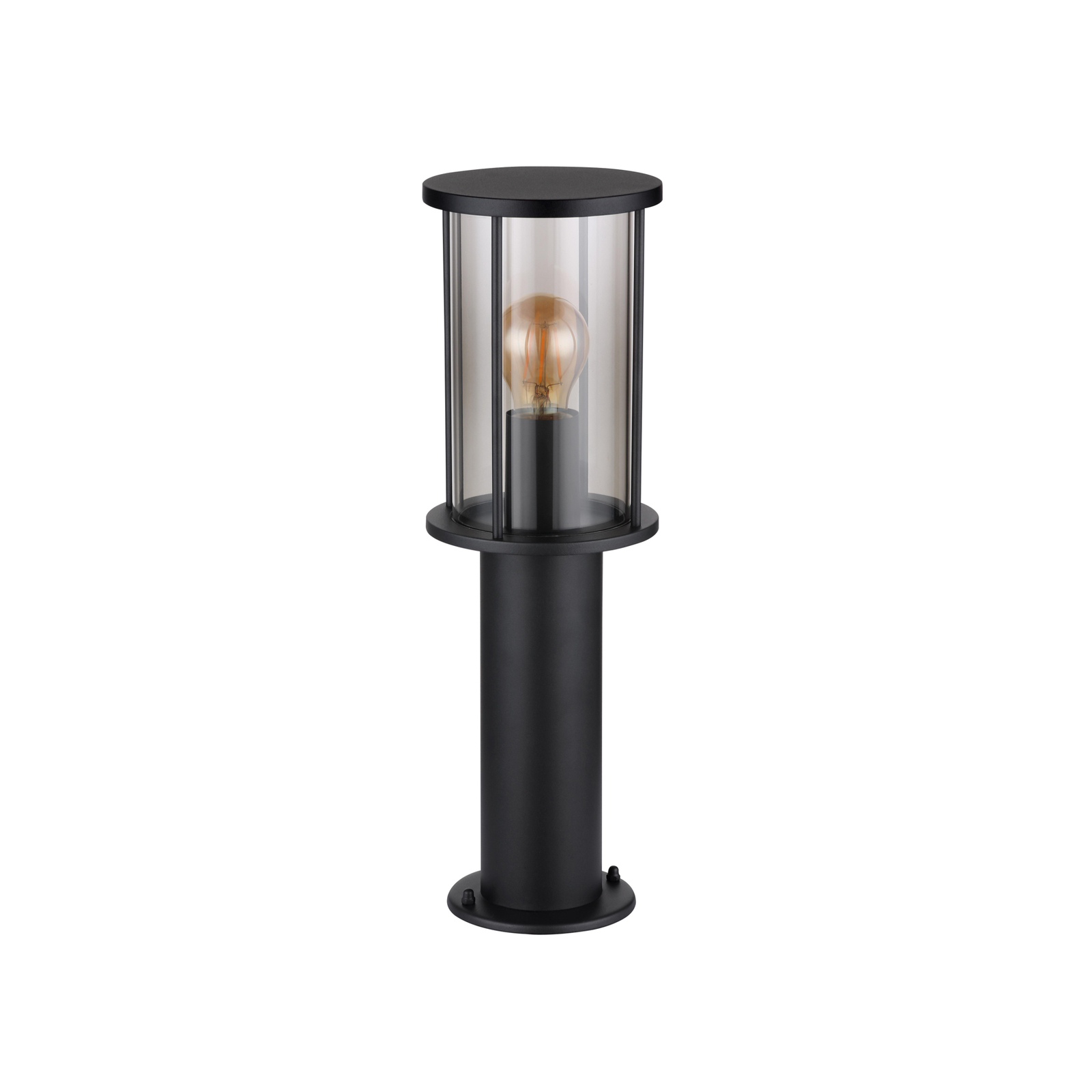- 50 days free returns
- Rated “Great” on Trustpilot
- The UK's largest selection of brands
Pedestal lights - the dwarfs among outdoor lights
As the name suggests, pedestal luminaires preferably stand on pedestals. But they also make do with walls, terraces and paths. They not only create a beautiful ambience in the garden, they also help with orientation. With a height of 40 to 50 centimetres**, they could be described as "the dwarfs of outdoor lights". But as they are rarely on the ground, they are confidently competing with their big brothers, the mast lights. And so the small pillar light placed on a plinth has a similar lighting effect to a stately candelabra.
:format(jpeg))
:format(jpeg))
How are skirting lights mounted?
They often stand on a gallery. They can then be screwed directly to the plinth base. On the ground, we recommend installation on a frost-proof foundation or a similarly firm base. This ensures that your skirting light stands securely. If you don't want to be tied down, a base light with an earth spike is a good choice. This means that you can try out and rearrange as required and as the mood takes you. Sometimes a flower in bloom here, sometimes a particularly beautiful bush in the spotlight there.
Involve the electrician during installation
As an amateur DIY enthusiast, you should not try your hand at electrical work. Therefore, the following applies to skirting lights that are to be connected to the power supply via underground cables: always consult a specialist or at least seek advice. If you have any further questions, please call our technical advice centre. Contact details can be found below.
With a motion detector.
Equipped with a motion detector, your pedestal light is even more practical: the light only switches on when it is needed. And it also switches off again after a set time - which means you save electricity. Or save the battery of your solar light. Motion detectors also make the garden safer - in two ways: Firstly, you won't trip over a garden hose lying around so easily. Secondly, burglars don't feel welcome when the light comes on.
Please note the detection angle for pedestal lights with motion detectors: If it is too large, the neighbour's property is sometimes also covered. If it is too small, you first have to pass a certain point for the light to switch on - burglars will be delighted. Models are often offered that cover 120 degrees. This is sufficient if you want to record the paths and access roads. If you also want light when you approach across the meadow, the angle of coverage must be larger. It is also possible to customise a 360-degree motion detector with apertures You can find more information on this topic in our guide article.
:format(jpeg))
Are there also pedestal lights with solar?
The sun as a source of energy? This is environmentally friendly and practical. This eliminates electricity costs and cable clutter is a thing of the past. Solar-powered pedestal lights are usually fitted with a ground spike. And he is mobilising. Because changing is quick. For decoration and design fans simply sup
What materials are skirting lights made of?
Do you want them to be robust? Robust stainless steel makes it possible. However, pedestal lights made of aluminium and other metals are also suitable for outdoor use. To ensure that the light source is well protected but can still shine perfectly, shades made of glass or plastic are very suitable. Now it's just a matter of overcoming the agony of choice and getting started with outdoor lighting. Our specialist advice team will be happy to provide you with practical tips - contact details can be found below.
:format(jpeg))
:format(jpeg))
:format(jpeg))
:format(jpeg))
Pedestal lights with additional feature: a socket outlet
Quickly charge your mobile phone in the garden? Using the electric hedge trimmer without dragging a cable drum behind you? This is not a problem if your pedestal lights not only provide you with light, but also electricity. Equipped with sockets as an extra feature, they bring much more functionality to the garden than their name promises.
Do you want it to be round and elegant?
This is a popular version of the plinth light: The frame is crowned by an illuminating sphere - in opal white, this creates a particularly beautiful impression. The light is thus gently glare-free. The surroundings are evenly illuminated and immediately appear much more inviting. Pedestal lights with spherical glass shades make a classy impression not only at the edge of paths, but also on walls and other elevations. Another popular variant: just the ball without the frame.
:format(jpeg))
:format(jpeg))
With which protection class is the skirting light safe?
What you should pay attention to is the protection class, for example IP44. The first digit provides information about protection against foreign bodies, while the second digit provides information about protection against moisture. Since rain is part of the equation, your skirting lights should have at least IP44 protection - of course, more is not a disadvantage. With IP44, they are protected against foreign bodies larger than one millimetre and also against splashing water. This way, you can be sure that your skirting lights - including the electrics - can withstand the rain and eliminate sources of danger.
| Digit IP4 X 4 | Protection against foreign bodies |
|---|---|
| 0 | No protection |
| 1 | Protected against solid foreign bodies ≥ 50 mm |
| 2 | Protected against solid foreign bodies ≥ 12.5 mm |
| 3 | Protected against solid foreign bodies ≥ 2.5 mm |
| 4 | Protected against solid foreign bodies ≥ 1 mm |
| 5 | Dustproof |
| 6 | Dustproof |
| Digit IP4 X | Protection against moisture |
|---|---|
| 0 | No protection |
| 1 | Protected against vertically impinging dripping water |
| 2 | Protected against dripping water at an angle |
| 3 | Protected against water spray |
| 4 | Protected against splash water |
| 5 | Protected against water jets |
| 6 | Protected against strong water jets |
| 7 | Protected against temporary submersion |
| 8 | Protected against permanent submersion |
You can find more information on the types of protection in our IP protection types guide.
The strike-through prices correspond to the manufacturer's RRP.
All prices include 20% VAT, delivery costs excluded.











































